Places on our 2024 summer school are filling fast. Don’t miss out. Enrol now to avoid disappointment
- 13 Ways to Make Your Writing More Interesting to Read

There are numerous characteristics of a good essay: original thinking, a tight structure, balanced arguments, and many more .

You should also read…
- How to Improve Your Writing Skills in your Spare Time
- 5 Top Tips for Everyday Study Success
But one aspect often overlooked is that a good essay should be interesting . It should spark the curiosity of the reader, keep them absorbed, make them want to keep reading and learn more. A boring essay risks losing the reader’s attention; even if the points you make are excellent, a dull writing style or poor handling of a dry subject matter can undermine the positive aspects of the essay. The problem is that many students think that essays should be like this: they think that a dull, dry style is suited to the purposes of academic writing, and don’t consider that the teacher reading their essay wants to find the essay interesting. Academic writing doesn’t have to be – and shouldn’t be – boring. The good news is that there are plenty of things you can do to make your writing more interesting, even though you can only do so much while remaining within the formal confines of academic writing. Let’s look at what they are.
1. Be interested in what you’re writing about

If there’s one thing guaranteed to inject interest into your writing, it’s actually being interested in what you’re writing about. Passion for a subject comes across naturally in your writing, typically making it more lively and engaging, and infusing an infectious enthusiasm into your words – in the same way that it’s easy to chat knowledgeably to someone about something you find interesting. This makes it relatively easy to write interestingly about a subject you have a real passion for. However, problems arise when you’re forced to write an essay about subjects for which you lack enthusiasm. It’s difficult to conjure up passion for your least favourite subjects, and that will come across in your writing. There are steps you can take, though: here are some tips on writing about a subject you don’t enjoy.
- Adjust your mindset : convince yourself that there are no boring subjects. If the subject or essay comes across as boring, blame yourself; if you find yourself feeling negatively about it, try to find the interest in it. Think about how it relates to the real world and how important the subject is. Find interesting snippets of information about it and look at it from a new angle.
- Think about your reader : consider the fact that not everyone will find the subject as boring as you do. As you write, keep the reader in mind and imagine them to be the world’s biggest fan of this subject.
- Find the fans : if you find it impossible to get into the mindset of your audience, try Googling the subject to find forums, videos or blog posts in which the subject is discussed by people who do find it interesting. This will help you picture whom you’re writing for, and give you a different perspective on a subject you may not have found inspiring up to now.
2. Include fascinating details

Another factor that can make an essay boring is a dry subject matter. Some subjects or topic areas are naturally dry, and it falls to you to make the essay more interesting through your written style (more on this later) and by trying to find fascinating snippets of information to include that will liven it up a bit and make the information easier to relate to. One way of doing this with a dry subject is to try to make what you’re talking about seem relevant to the real world, as this is easier for the reader to relate to. In a discussion of a seemingly boring piece of legislation, for instance, you could make a comment along the lines of “if it were not for this legislation, none of us would enjoy the freedom to do such and such today”, or “Legislation A ultimately paved the way for Legislation B, which transformed criminal law as we know it.” Make it seem exciting!
3. Emulate the style of writers you find interesting
When you read a lot, you subconsciously start emulating the style of the writers you read. It’s therefore beneficial to read widely, as this exposes you to a range of styles and you can start to take on the characteristics of those you find interesting to read. If you feel engaged with a piece of writing, the writer must be doing something right! As you read, think consciously about what the writer is doing to hold your interest, perhaps underlining or copying out certain phrases, techniques, sentence structures and so on. Then apply their techniques to your own writing.
4. Write in the active voice

It’s the oldest trick in the book, but using the active rather than the passive voice will automatically make your writing more interesting to read. It results in more direct, energetic writing that makes the reader feel more ‘in the moment’. Unfortunately, many students employ the passive voice in the belief that it makes their writing sound more academic or intellectual; in fact, it makes their writing sound boring. Remember, the active voice is when the subject of the sentence “acts”, while the passive voice is when the subject is acted upon. Passive : It was concluded by the scientists that the methods used were… Active : The scientists concluded that the methods used were… The subject in this example is “the scientists” and the “act” they are carrying out is “concluding”. As you can see in this example, the active voice almost always results in neater and more elegant phrasing, which is more concise and enjoyable to read.
5. Borrow some creative writing techniques
There’s clearly a limit to the amount of actual ‘story-telling’ you can do when you’re writing an essay; after all, essays should be objective, factual and balanced, which doesn’t, at first glance, feel very much like story-telling. However, you can apply some of the principles of story-telling to make your writing more interesting. For example, just as the opening sentence or paragraph of a novel is incredibly important in capturing the attention of the reader early on, so the first paragraph of your essay is essential in making your reader want to continue reading it. Start with an attention-grabbing ‘hook’ to draw them in, such as a controversial statement, a tantalising snippet of information or a rhetorical question (more on these below). Here are some more techniques you can adopt from creative writing to improve your essays .
6. Think about your own opinion

Your essay is bound to be boring if all you do is paraphrase what everyone else says about something. A good essay – in humanities subjects, at least – incorporates the writer’s intelligent responses to what others say, and this critical consideration not only shows that you’re thinking at a high academic level, but it automatically adds more interest and originality to your writing. So, think independently and don’t be afraid to demonstrate that you’re doing as much.
7. Cut the waffle
Rambling on and on is boring, and almost guaranteed to lose the interest of your reader. You’re at risk of waffling if you’re not completely clear about what you want to say, or if you haven’t thought carefully about how you’re going to structure your argument. Doing your research properly and writing an essay plan before you start will help prevent this problem. Editing is an important part of the essay-writing process, so once you’ve done a first draft, edit out the waffle. Read through your essay objectively and take out the bits that aren’t relevant to the argument or that labour the point. As well as editing out chunks of text, it’s important to be economical with words – not using ten where five will suffice, and avoiding clunky phrases such as those outlined in this article . During the editing process, tighten up your phrasing by eliminating unnecessary words and reordering any sentences that read badly.
8. Using a thesaurus isn’t always a good thing
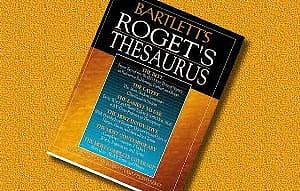
You may think that using a thesaurus to find more complicated words will make your writing more interesting, or sound more academic, but using overly high-brow language can have the wrong effect. It alienates the reader and makes you sound pompous, with the result that the essay is more laborious to read and the reader may quickly lose interest. Despite this, many undergraduates admit to deliberately over-complicating their language to make it sound more high-brow. If you want to keep your reader interested, keep your language clear and simple.
9. Avoid repetitive phrasing
Avoid using the same sentence structure again and again: it’s a recipe for dullness! Instead, use a range of syntax that demonstrates your writing capabilities as well as making your writing more interesting. Mix simple, compound and complex sentences to avoid your writing becoming predictable.
10. Use some figurative language

As we’ve already seen, it’s easy to end up rambling when you’re explaining difficult concepts, – particularly when you don’t clearly understand it yourself. A way of forcing yourself to think clearly about a concept, as well as explaining it more simply and engagingly, is to make use of figurative language. This means explaining something by comparing it with something else, as in an analogy. For example, you might use the analogy of water escaping from a hole in a bucket to explain the exponential decay of a radioactive substance, as the rate of depletion of both depends on how much remains, making it exponential. This gives the reader something familiar to visualise, making it easier for them to understand a new concept (obviously this will not be a new concept for the teacher who set your essay, but they will want to see that you can explain concepts clearly and that you have a thorough grasp of it yourself).
11. Avoid clichés
Clichés are overused words or phrases that make your writing predictable, and therefore less interesting. An example would be “at the end of the day”, but there are many such favourites of student essay-writers. Don’t forget that your teacher will have a stack of essays to read in one sitting; if you use the same tired expressions everyone else uses, your essay will blend in with all the others. Make it stand out by shunning the clichés you know your classmates will be using.
12. Employ rhetorical questions
One of the ways in which ancient orators held the attention of their audiences and increased the dramatic effect of their speeches was by making use of the rhetorical question. What is a rhetorical question? It’s essentially one you ask without expecting your audience to answer – one that you will answer yourself, like the one we asked in the previous sentence. This can be an effective way of introducing a new line of enquiry, or of raising questions that you’re going to address in more detail. A good place to use a rhetorical question is at the end of a paragraph, to lead into the next one, or at the beginning of a new paragraph to introduce a new area for exploration. The rhetorical question, “But is there any evidence to support X’s claim?” could, for instance, begin a paragraph that discusses evidence for an opinion introduced in the previous paragraph. What’s more, as we’ve already seen, you could use a rhetorical question as your ‘hook’ to lure readers in right at the beginning of your essay.
13. Proofread
Finally, you could write the most interesting essay a teacher has ever read, but you’ll undermine your good work if it’s littered with errors, which distract the reader from the actual content and will probably annoy them. Before you submit your essay, proofread it thoroughly to ensure that the grammar is elegant, the punctuation is perfect and the spelling is flawless. Don’t just use a spelling and grammar checker, as these don’t always pick up on all the errors.
Do you want to take your writing to the next level? Our Creative Writing summer school will teach you how to experiment with a number of different writing techniques, plan, edit and proofread your own work and introduce you to new concepts and ideas.
Image credits: banner ; carousel ; rose ; scientists ; baby ; thesaurus ; hawk ; questions .
Comments are closed.
This site uses cookies to store information on your computer. Some are essential to make our site work; others help us improve the user experience. By using the site, you consent to the placement of these cookies. Read our privacy policy to learn more.
5 Tips to Making Your Writing More Exciting

What makes good writing?
Accuracy. Clarity. Brevity.
Perhaps you enjoy writing or perhaps you find it sort of painful. Regardless, all of us have to write something on a daily basis, whether it’s an email, proposal, presentation, article, and just about anything else.
However, the focus shouldn’t be on whether you want to write; it should be on your message. If you want your message to resonate, you’ll want to find ways to make your writing more appealing, interesting, and informative. The best way to do this is to pay attention to your word choice.
Here are 5 practical tips you can apply right away.
1. Choose active voice and vivid verbs . Passive voice, or leaving the subject out of the sentence, makes it look like you are trying to avoid responsibility. For example, instead of “the ball was thrown,” write “he threw the ball.” Whenever possible, avoid the “to be” verb (is, are, am, was, were). Instead of saying “he was running the meeting with an iron fist,” say “he ran the meeting with an iron fist.” Instead of “Bill is a great employee,” try “Bill works exceptionally well on a team.”
2.Choose precise words. All writing is made up of words. Doh! you may say, of course it is . To keep your writing short and to the point, use specific words. For example, rather than “several people,” use “three people.” Did you notice the title of this article? Instead of just saying “Tips to Make Your Writing More Exciting,” we’ve said, “5 Tips ….” Using numbers draws attention and gives the reader a “specific” path to follow.
3.Choose concise phrasing . Instead of “don't have the resources,” use “lack the resources.” Change “in view of the fact that” to “because.” Rather than “at the conclusion of the meeting,” write “following the meeting.” Shorter phrases make your writing easier to read and more interesting; longer phrases, while technically accurate, muddy up your writing.
4.Choose simple words. Trying to impress people with big words and complex sentences leads to ineffective writing. Avoid words like “utilize” rather than “use,” “ascertain” rather than “find out.” Exciting writing is focused and simple.
5.Choose appropriate words. If you write a technical piece for a publication, client, or colleague, you may choose to use jargon, acronyms, and industry-speak the intended audience naturally understands. When writing a note to a roommate or friend, you may choose to use slang or ultra-casual language. Either way, the reader needs to intuitively understand your point without asking questions or using Wikipedia to figure out what you’re trying to say.
The best way to improve your writing, whether you like to write or not, is to pay attention! While that may sound overly simple, it’s true. Spend time reading and reviewing your work, even if it’s a simple email. Make sure you’ve used clear and concise words, and that you’ve stopped writing when you’ve made your point.
Word choice can showcase your knowledge and education … or make you look juvenile and amateur. As Mark Twain said: The difference between the right word and the almost right word is the difference between lightning and a lightning bug.
Better writing equals better communication. Good luck!

We are the American Institute of CPAs, the world’s largest member association representing the accounting profession. Our history of serving the public interest stretches back to 1887. Today, you'll find our 431,000+ members in 130 countries and territories, representing many areas of practice, including business and industry, public practice, government, education and consulting.
About AICPA
- Mission and History
- Annual Reports
- AICPA Media Center
- AICPA Research
- Jobs at AICPA
- Order questions
- Forgot Password
- Store policies
Association of International Certified Professional Accountants. All rights reserved.
- Terms & Conditions
How to Write an Article: A Proven Step-by-Step Guide
Are you dreaming of becoming a notable writer or looking to enhance your content writing skills? Whatever your reasons for stepping into the writing world, crafting compelling articles can open numerous opportunities. Writing, when viewed as a skill rather than an innate talent, is something anyone can master with persistence, practice, and the proper guidance.
That’s precisely why I’ve created this comprehensive guide on ‘how to write an article.’ Whether you’re pursuing writing as a hobby or eyeing it as a potential career path, understanding the basics will lead you to higher levels of expertise. This step-by-step guide has been painstakingly designed based on my content creation experience. Let’s embark on this captivating journey toward becoming an accomplished article writer!
What is an Article?

An article is more than words stitched together cohesively; it’s a carefully crafted medium expressing thoughts, presenting facts, sharing knowledge, or narrating stories. Essentially encapsulating any topic under the sun (or beyond!), an article is a versatile format meant to inform, entertain, or persuade readers.
Articles are ubiquitous; they grace your morning newspaper (or digital equivalents), illuminate blogs across various platforms, inhabit scholarly journals, and embellish magazines. Irrespective of their varying lengths and formats, which range from news reports and features to opinion pieces and how-to guides, all articles share some common objectives. Learning how to write this type of content involves mastering the ability to meet these underlying goals effectively.
Objectives of Article Writing

The primary goal behind learning how to write an article is not merely putting words on paper. Instead, you’re trying to communicate ideas effectively. Each piece of writing carries unique objectives intricately tailored according to the creator’s intent and the target audience’s interests. Generally speaking, when you immerse yourself in writing an article, you should aim to achieve several fundamental goals.
First, deliver value to your readers. An engaging and informative article provides insightful information or tackles a problem your audience faces. You’re not merely filling up pages; you must offer solutions, present new perspectives, or provide educational material.
Next comes advancing knowledge within a specific field or subject matter. Especially relevant for academic or industry-focused writings, articles are often used to spread original research findings and innovative concepts that strengthen our collective understanding and drive progress.
Another vital objective for those mastering how to write an article is persuasion. This can come in various forms: convincing people about a particular viewpoint or motivating them to make a specific choice. Articles don’t always have to be neutral; they can be powerful tools for shifting public opinion.
Finally, let’s not forget entertainment – because who said only fictional work can entertain? Articles can stir our emotions or pique our interest with captivating storytelling techniques. It bridges the gap between reader and writer using shared experiences or universal truths.
Remember that high-quality content remains common across all boundaries despite these distinct objectives. No matter what type of writer you aspire to become—informative, persuasive, educational, or entertaining—strive for clarity, accuracy, and stimulation in every sentence you craft.
What is the Format of an Article?

When considering how to write an article, understanding its foundation – in this case, the format – should be at the top of your list. A proper structure is like a blueprint, providing a direction for your creative construction.
First and foremost, let’s clarify one essential point: articles aren’t just homogenous chunks of text. A well-crafted article embodies different elements that merge to form an engaging, informative body of work. Here are those elements in order:
- The Intriguing Title
At the top sits the title or heading; it’s your first chance to engage with a reader. This element requires serious consideration since it can determine whether someone will continue reading your material.
- Engaging Introduction
Next comes the introduction, where you set expectations and hint at what’s to come. An artfully written introduction generates intrigue and gives readers a compelling reason to stick around.
- Informative Body
The main body entails a detailed exploration of your topic, often broken down into subtopics or points for more manageable consumption and better flow of information.
- Impactful Conclusion
Lastly, you have the conclusion, where you tie everything neatly together by revisiting key points and offering final thoughts.
While these components might appear straightforward on paper, mastering them requires practice, experimentation with writing styles, and a good understanding of your target audience.
By putting in the work to familiarize yourself with how to create articles and how they’re structured, you’ll soon discover new ways to develop engaging content each time you put pen to paper (or fingers to keyboard!). Translating complex concepts into digestible content doesn’t need to feel daunting anymore! Now that we’ve tackled the format, our focus can shift to what should be included in an article.
What Should Be in an Article?

Understanding that specific items should be featured in your writing is crucial. A well-crafted article resembles a neatly packed suitcase – everything has its place and purpose.
Key Information
First and foremost, you need essential information. Start by presenting the topic plainly so readers can grasp its relevance immediately. This sets the tone of why you are writing the article. The degree of depth at this point will depend on your audience; be mindful not to overwhelm beginners with too much jargon or over-simplify things for experts.
Introduction
Secondly, every article must have an engaging introduction—this acts as the hook that reels your audience. Think of it as a movie trailer—it offers a taste of what’s to come without giving away all the details.
Third is the body, wherein you get into the crux of your argument or discussion. This is the point at which you present your ideas sequentially, along with supporting evidence or examples. Depending on the nature of your topic and personal style, this may vary from storytelling forms to more analytical breakdowns.
Lastly, you’ll need a fitting conclusion that wraps up all previously discussed points, effectively tying together every loose thread at the end. This helps cement your main ideas within the reader’s mind even after they’ve finished reading.
To summarize:
- Critical Information: Provides context for understanding
- Introduction: Sheds further light on what will follow while piquing interest
- Body: Discusses topic intricacies using narratives or case studies
- Conclusion: Ties up loose ends and reemphasizes important takeaways
In my experience writing articles for beginners and experts alike, I found these elements indispensable when conveying complex topics articulately and professionally. Always keep them at hand when looking to produce written material.
How should you structure an article?

Crafting a well-structured article is akin to assembling a puzzle – every piece has its place and purpose. Let’s look at how to create the perfect skeleton for your content.
The introduction is your article’s welcome mat. It should be inviting and informative, briefly outlining what a reader can expect from your writing. Additionally, it must instantly grab the readers’ attention so they feel compelled to continue reading. To master the art of creating effective introductions, remember these key points:
- Keep it short and precise.
- Use compelling hooks like quotes or intriguing facts.
- State clearly what the article will cover without revealing everything upfront.
Moving on, you encounter the body of your piece. This segment expands on the ideas outlined in the introduction while presenting fresh subtopics related to your core story. If we compare article writing to crossing a bridge, each paragraph represents a step toward the other side (the conclusion). Here are some tips for maintaining orderliness within your body:
- Stick closely to one idea per paragraph as it enhances readability.
- Ensure paragraphs flow logically by utilizing transitional words or sentences.
- Offer evidence or examples supporting your claims and reinforce credibility.
As you approach the far side of our imaginary bridge, we reach an equally essential section of the article known as the conclusion. At this point, you should be looking to wrap your message up neatly while delivering on what was initially promised during the introduction. This section summarizes the main points, providing closure and ensuring readers feel satisfied.
Remember this golden rule when writing the conclusion: follow the “Describe what you’re going to tell them (Introduction), tell them (Body), and then summarize what you told them (Conclusion).” It’s a proven formula for delivering informative, engaging, and well-structured articles.
One final tip before moving on: maintaining an active voice significantly enhances clarity for your readers. It makes them feel like they’re participating actively in the story unfolding within your article. In addition, it helps ensure easy readability, which is vital for keeping your audience engaged.
Tips for Writing a Good Article

A persuasive, engaging, and insightful article requires careful thought and planning. Half the battle won is by knowing how to start writing and make content captivating. Below are vital tips that can enhance your article writing skills.
Heading or Title
An audience’s first impression hinges on the quality of your title. A good heading should be clear, attention-grabbing, and give an accurate snapshot of what’s contained in the piece’s body. Here are a few guidelines on how to create an impactful title:
- Make it Compelling: Your title needs to spark interest and motivate readers to delve further into your work.
- Keep it concise: You want to have a manageable heading. Aim for brevity yet inclusiveness.
- Optimize with keywords: To boost search engine visibility, sprinkle relevant keywords naturally throughout your title.
By applying these techniques, you can increase reader engagement right from the get-go.
Body of the Article
After winning over potential readers with your catchy title, it’s time to provide substantial content in the form of the body text. Here’s how articles are typically structured:
Introduction: Begin by providing an appealing overview that hooks your audience and baits them to read more. You can ask poignant questions or share interesting facts about your topic here.
Main Content: Build on the groundwork set by your introduction. Lay out detailed information in a logical sequence with clear articulation.
Conclusion: This reemphasizes the critical points discussed in the body while delivering a lasting impression of why those points matter.
Remember that clarity is critical when drafting each part because our objective here is to share information and communicate effectively. Properly understanding this approach ensures that the writing experience becomes creative and productive.
Step By Step Guide for Article Writing

How do you write an article that engages your readers from the first line until the last? That’s what most writers, whether beginners or seasoned pros are trying to achieve. I’ll describe a step-by-step process for crafting such gripping articles in this guide.
Step 1: Find Your Target Audience
First and foremost, identify your target readers. Speaking directly to a specific group improves engagement and helps you craft messages that resonate deeply. To pinpoint your audience:
- Take note of demographic attributes like age, gender, and profession.
- Consider their preferences and needs.
- Look into how much knowledge they are likely to possess concerning your topic.
Knowing this will help you decide what tone, language, and style best suits your readers. Remember, by understanding your audience better, you make it much easier to provide them with engaging content.
Step 2: Select a Topic and an Attractive Heading
Having understood your audience, select a relevant topic based on their interests and questions. Be sure it’s one you can competently discuss. When deciding how to start writing an article, ensure it begins with a captivating title.
A title should hint at what readers will gain from the article without revealing everything. Maintain some element of intrigue or provocation. For example, ‘6 Essentials You Probably Don’t Know About Gardening’ instead of just ‘Gardening Tips’.
Step 3: Research is Key
Good research is crucial to building credibility for beginners and experts alike. It prevents errors that could tarnish your piece immensely.
Thoroughly explore relevant books, scholarly articles, or reputable online resources. Find facts that build authenticity while debunking misconceptions that relate to your topic. Take notes on critical points discovered during this process—it’ll save you time when creating your first draft.
Step 4: Write a Comprehensive Brief
Having done your research, it’s time to write an outline or a brief—a roadmap for your article. This conveys how articles are written systematically without losing track of the main points.
Begin by starting the introduction with a punchy opener that draws readers in and a summary of what they’ll glean from reading. Section out specific points and ideas as separate headings and bullet points under each section to form the body. A conclusion rounds things up by restating key takeaways.
Step 5: Write and Proofread
Now comes the bulk of the work—writing. Respect the brief created earlier to ensure consistency and structure while drafting content. Use short, clear sentences while largely avoiding jargon unless absolutely necessary.
Post-writing, proofread ardently to check for typographical errors, inconsistent tenses, and poor sentence structures—and don’t forget factual correctness! It helps to read aloud, which can reveal awkward phrases that slipped through initial edits.
Step 6: Add Images and Infographics
To break text monotony and increase comprehension, introduce visuals such as images, infographics, or videos into your piece. They provide aesthetic relief while supporting the main ideas, increasing overall engagement.
Remember to source royalty-free images or get permission for copyrighted ones—you don’t want legal battles later!
Common Mistakes to Avoid in Article Writing

Regarding article writing, a few pitfalls can compromise the quality of your content. Knowing these and how to avoid them will enhance your work’s clarity, depth, and impact.
The first mistake often made is skimping on research. An article without solid underpinnings won’t merely be bland – it might mislead readers. Therefore, prioritize comprehensive investigation before penning down anything. Understanding common misconceptions or misinterpretations about your topic will strengthen your case.
Next, sidestep unnecessary jargon or excessively complex language. While showcasing an impressive vocabulary might seem appealing, remember that your primary objective is imparting information efficiently and effectively.
Moreover, failing to structure articles effectively represents another standard error. A structured piece aids in delivering complex ideas coherently. Maintaining a logical sequence facilitates reader comprehension, whether explaining a detailed concept or narrating an incident.
A piece lacking aesthetic allure can fail its purpose regardless of the value of its text. That’s where images come into play. Neglecting them is an all-too-common mistake among beginners. Relevant pictures inserted at appropriate junctures serve as visual breaks from texts and stimulate interest among readers.
Lastly, proofreading is vital in determining whether you can deliver a well-written article. Typos and grammatical errors can significantly undermine professional credibility while disrupting a smooth reading experience.
So, when pondering how articles are written, avoiding these mistakes goes a long way toward producing high-quality content that embodies both substance and style. Remember: practice is paramount when learning how to write excellent material!
How to Write an Article with SEOwind AI Writer?
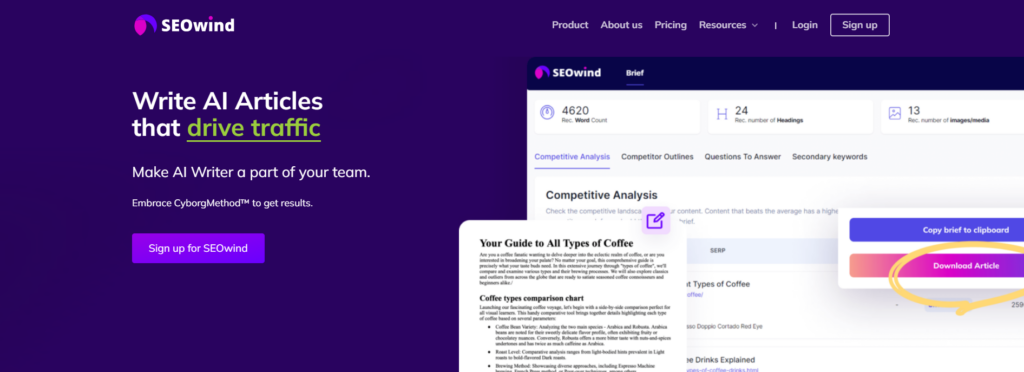
Harnessing the power of artificial intelligence has been a major step in many industries. One such significant tool is SEOwind AI Writer , which is critical for those curious about how to write an article leveraging AI. In this section, I’ll cover how you can effectively use SEOwind AI writer to create compelling articles.
Step 1: Create a Brief and Outline
The first step in writing an article revolves around understanding your audience’s interests and then articulating them in a comprehensive brief that outlines the content’s framework.
- Decide on the topic: What ideas will you share via your article?
- Define your audience: Knowing who will read your text significantly influences your tone, style, and content depth.
- Establish main points: Highlight the key points or arguments you wish to exhibit in your drafted piece. This helps create a skeleton for your work and maintain a logical flow of information.
With SEOwind:
- you get all the content and keyword research for top-performing content in one place,
- you can generate a comprehensive AI outline with one click,
- users can quickly create a title, description, and keywords that match the topic you’re writing about.
As insightful as it might seem, having a roadmap doubles as a guide throughout the creative process. SEOwind offers a user-friendly interface that allows the easy input of essential elements like keywords, title suggestions, content length, etc. These provide an insightful outline, saving time with an indispensable tool that demonstrates the practicality of article writing.
Step 2: Write an AI Article using SEOwind
Once you have a brief ready, you can write an AI article with a single click. It will consider all the data you provided and much more, such as copywriting and SEO best practices , to deliver content that ranks.
Step 3: Give it a Human Touch
Finally, SEOwind’s intuitive platform delivers impeccably constructed content to dispel any confusion about writing an article. The result is inevitably exceptional, with well-structured sentences and logically sequenced sections that meet your demands.
However, artificial intelligence can sometimes miss the unique personal touch that enhances relatability in communication—making articles more compelling. Let’s master adding individualistic charm to personalize articles so that they resonate with audiences.
Tailoring the AI-generated piece with personal anecdotes or custom inputs helps to break the monotony and bolster engagement rates. Always remember to tweak essential SEO elements like meta descriptions and relevant backlinks.
So, whether it’s enhancing casual language flow or eliminating robotic consistency, the slightest modifications can breathe life into the text and transform your article into a harmonious man-machine effort. Remember – it’s not just about technology making life easy but also how effectively we utilize this emerging trend!
Common Questions on how to write an article
Delving into the writing world, especially regarding articles, can often lead to a swarm of questions. Let’s tackle some common queries that newbies and seasoned writers frequently stumble upon to make your journey more comfortable and rewarding.
What is the easiest way to write an article?
The easiest way to write an article begins with a clear structure. Here are five simple steps you can follow:
- Identify your audience: The first thing you should consider while planning your article is who will read it? Identifying your target audience helps shape the article’s content, style, and purpose.
- Decide on a topic and outline: Determining what to write about can sometimes be a formidable task. Try to ensure you cover a topic you can cover effectively or for which you feel great passion. Next, outline the main points you want to present throughout your piece.
- Do the research: Dig deep into resources for pertinent information regarding your topic and gather as much knowledge as possible. An informed writer paves the way for a knowledgeable reader.
- Drafting phase: Begin with an engaging introduction followed by systematically fleshing out each point from your outline in body paragraphs before ending with conclusive remarks tying together all the earlier arguments.
- Fine-tune through editing and proofreading: Errors happen no matter how qualified or experienced a writer may be! So make sure to edit and proofread before publishing.
Keep these keys in mind and remain patient and persistent. There’s no easier alternative for writing an article.
How can I write an article without knowing about the topic?
We sometimes need to write about less familiar subjects – but do not fret! Here’s my approach:
- First off, start by thoroughly researching subject-centric reliable sources. The more information you have, the better poised you are to write confidently about it.
- While researching, take notes and highlight the most essential points.
- Create an outline by organizing these points logically – this essentially becomes your article’s backbone.
- Start writing based on your research and outlined structure. If certain aspects remain unclear, keep investigating until clarity prevails.
Getting outside your comfort zone can be daunting, but is also a thrilling chance to expand your horizons.
What is your process for writing an article quickly?
In terms of speed versus quality in writing an article – strikingly enough, they aren’t mutually exclusive. To produce a high-quality piece swiftly, adhere to the following steps:
- Establish purpose and audience: Before cogs start turning on phrase-spinning, be clear on why you’re writing and who will likely read it.
- Brainstorm broadly, then refine: Cast a wide net initially regarding ideas around your topic. Then, narrow down those areas that amplify your core message or meet objectives.
- Create a robust outline: A detailed roadmap prevents meandering during actual writing and saves time!
- Ignore perfection in the first draft: Speed up initial drafting by prioritizing getting your thoughts on paper over perfect grammar or sentence compositions.
- Be disciplined with edits and revisions: Try adopting a cut, shorten, and replace mantra while trimming fluff without mercy!
Writing quickly requires practice and strategic planning – but rest assured, it’s entirely possible!
Seasoned SaaS and agency growth expert with deep expertise in AI, content marketing, and SEO. With SEOwind, he crafts AI-powered content that tops Google searches and magnetizes clicks. With a track record of rocketing startups to global reach and coaching teams to smash growth, Tom's all about sharing his rich arsenal of strategies through engaging podcasts and webinars. He's your go-to guy for transforming organic traffic, supercharging content creation, and driving sales through the roof.
Table of Contents
- 1 What is an Article?
- 2 Objectives of Article Writing
- 3 What is the Format of an Article?
- 4 What Should Be in an Article?
- 5 How should you structure an article?
- 6 Tips for Writing a Good Article
- 7 Step By Step Guide for Article Writing
- 8 Common Mistakes to Avoid in Article Writing
- 9 How to Write an Article with SEOwind AI Writer?
- 10 Common Questions on how to write an article
Related Posts
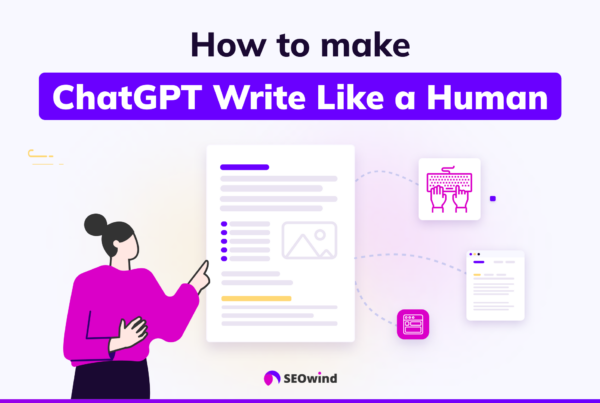
- How to Make ChatGPT Write Like a Human
- AI Writing Myths and Misconceptions: Separating Fact from Fiction
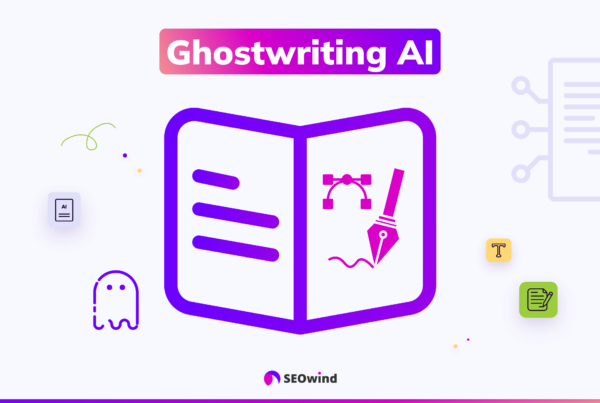
AI Ghostwriting: Craft Perfect Content Fast!
- #100Posts30DaysChallenge
- Affiliate program
- Privacy Policy
- Terms and Conditions
Latest Posts
- Boost Your SaaS Growth: Top SaaS Content Marketing Agency
- Content Intelligence and AI – Boost your strategy
- SEOwind vs MarketMuse vs Frase
- SEOwind vs Marketmuse vs Clearscope
- SEOwind vs Clearscope vs Frase
- SEOwind vs Surfer SEO vs Clearscope
- SEOwind vs Surfer SEO vs Frase
- SEOwind vs Jasper AI vs Frase
- SEOwind vs Rytr vs Jasper
- SEOwind vs Writesonic vs Rytr
- SEOwind vs Writesonic vs Copy.ai
© 2024 SEOwind.
- AI Article Writer
- Content Brief Generator
- Human vs AI Experiment
Privacy Overview
- PRO Courses Guides New Tech Help Pro Expert Videos About wikiHow Pro Upgrade Sign In
- EDIT Edit this Article
- EXPLORE Tech Help Pro About Us Random Article Quizzes Request a New Article Community Dashboard This Or That Game Popular Categories Arts and Entertainment Artwork Books Movies Computers and Electronics Computers Phone Skills Technology Hacks Health Men's Health Mental Health Women's Health Relationships Dating Love Relationship Issues Hobbies and Crafts Crafts Drawing Games Education & Communication Communication Skills Personal Development Studying Personal Care and Style Fashion Hair Care Personal Hygiene Youth Personal Care School Stuff Dating All Categories Arts and Entertainment Finance and Business Home and Garden Relationship Quizzes Cars & Other Vehicles Food and Entertaining Personal Care and Style Sports and Fitness Computers and Electronics Health Pets and Animals Travel Education & Communication Hobbies and Crafts Philosophy and Religion Work World Family Life Holidays and Traditions Relationships Youth
- Browse Articles
- Learn Something New
- Quizzes Hot
- This Or That Game New
- Train Your Brain
- Explore More
- Support wikiHow
- About wikiHow
- Log in / Sign up
- Education and Communications
- Article Writing
How to Create a Good Article
Last Updated: March 13, 2024 Fact Checked
This article was co-authored by Gerald Posner . Gerald Posner is an Author & Journalist based in Miami, Florida. With over 35 years of experience, he specializes in investigative journalism, nonfiction books, and editorials. He holds a law degree from UC College of the Law, San Francisco, and a BA in Political Science from the University of California-Berkeley. He’s the author of thirteen books, including several New York Times bestsellers, the winner of the Florida Book Award for General Nonfiction, and has been a finalist for the Pulitzer Prize in History. He was also shortlisted for the Best Business Book of 2020 by the Society for Advancing Business Editing and Writing. There are 10 references cited in this article, which can be found at the bottom of the page. This article has been fact-checked, ensuring the accuracy of any cited facts and confirming the authority of its sources. This article has been viewed 341,145 times.
There’s so much content available these days that it might seem like your writing will never stand out. Think positively! Whatever type of article you’re writing, you can take some steps to make sure you create a great article that people will find interesting. Start by organizing all of your ideas and information. Then spend some time writing a catchy, thoughtful, and accurate article. Finally, give it a good edit so that it looks complete and professional.
Finding a Topic and Gathering Information

- Maybe your boss has asked you to write an article for the company newsletter. Check to see if there is a certain topic you should write about and how long the article should be.
- If you’re writing an article for the school paper, ask the editor or supervisor what you should cover. They might want you to write about the library renovations or write a feature about new students.
- Always stick to any guidelines that you’re given. It will make you look competent and responsible.

- Do some free-thinking. Just jot down any thoughts that come to mind. You can weed out the bad ideas later!
- For your cooking blog, you might scribble down words like “keto,” “blenders,” or “holiday meals.”
- Once you choose a topic, start making it more specific. For example, if you decide to write about holiday meals, you can narrow that down by choosing a specific holiday or season that you want to write about. You might decide to write about updated Thanksgiving classics.

- If you’re writing about a person or doing a news article, it’s a good idea to interview some people.
- When you do an interview, prepare a list of questions ahead of time so that you don't forget any important questions. Be on time and be respectful. Take good notes or record the conversation so that you can accurately quote the person.
- For your article about Thanksgiving dishes, you might talk to some friends to see what they like to eat. You could also look up some food safety facts so that you can give sound advice about properly cooking a turkey.

- Depending on the subject of your article, your source should be a few months to a few years old. Up to date information is typically the most accurate.
- For example, if you're writing about new trends for Thanksgiving appetizers, you probably don't want to look at a cookbook from 1975.

- Take care to record all the important details. That means any names, dates, facts, or statistics. Don’t forget to write down your source, too!
- Keep your notes in a file on your computer or use an app on your phone to keep them organized. If you take notes on paper, keep them in a file folder so that you can easily access them.
Writing a Draft

- You could write something like, “Are you tired of tasteless turkey on Thanksgiving? Spice up your holiday menu by introducing some bold new flavors!”

- Make sure to only include 1 idea in each paragraph so that your reader can more easily absorb the information. For example, don’t try to talk about side dishes and table decor in 1 paragraph. Those are 2 separate ideas.

- For your Thanksgiving article, you could write about certain foods that remind you of the Thanksgiving you celebrated while studying abroad.

- Don’t just tell your readers about how much you love serving a vegetarian Thanksgiving dinner. Give them concrete examples of how they can wow their guests.
- Leave out any fluff. While you might have a charming anecdote about your child dressing up like a turkey for school, that's probably not what your readers are looking for. Stick to the topic at hand, even when it comes to personal stories.

- If you’re really stuck, it’s okay to leave your article for the night and come back to it the next day when you feel those creative juices flowing.
Polishing Your Article

- Some popular tools include Grammarly, Ginger, ProWritingAid, and Hemingway.
- These tools can catch spelling errors, help correct your grammar, and can even help you make your writing more concise.

- Read for different issues each time you look over your article. For instance, the first time you might focus on catching stylistic errors. On your next read through, focus on making sure that you have the tone right.
- Read the article out loud to yourself. This can help you hear phrases that don't sound quite right.

- You can say, "Taylor, would you mind reading this article I wrote? I'd love your feedback. If you have time to look it over, I'd appreciate it."

- Instead of saying, "Because fall has nice crisp weather and many people like to watch football and eat pie, Thanksgiving has become a cherished tradition in the homes of many, many people," you could say, "Crisp weather, football, and pie are just a few reasons that people love Thanksgiving!"
How Do You Write Articles Fast Without Sacrificing Quality?
Expert Q&A

- Jot down ideas as they come to you so that you always have a list of topics ready. Thanks Helpful 0 Not Helpful 0
- If you have the choice, write about something that interests you. It will make it more fun! Thanks Helpful 0 Not Helpful 0
- Don’t stress if your first article isn’t perfect. Writing is a craft that takes a lot of practice. Thanks Helpful 0 Not Helpful 0

You Might Also Like

- ↑ https://writingcenter.unc.edu/tips-and-tools/understanding-assignments/
- ↑ https://writingcenter.unc.edu/tips-and-tools/brainstorming/
- ↑ https://ghost.org/blog/research-posts/
- ↑ https://www.library.georgetown.edu/tutorials/research-guides/evaluating-internet-content
- ↑ https://www.quicksprout.com/a-step-by-step-guide-to-writing-a-compelling-article-introduction/
- ↑ https://www.indeed.com/career-advice/career-development/how-to-write-articles
- ↑ https://owl.purdue.edu/owl/general_writing/the_writing_process/writers_block/index.html
- ↑ https://www.grammarly.com/proofreading
- ↑ https://writingcenter.unc.edu/tips-and-tools/editing-and-proofreading/
- ↑ https://owl.purdue.edu/owl/general_writing/academic_writing/conciseness/eliminating_words.html
About This Article

- Send fan mail to authors
Reader Success Stories
Mateen Siddiqui
Jun 7, 2017
Did this article help you?

Bridgette Crowe
Dec 16, 2017
Jun 12, 2019
Saman Shoaib
Sep 25, 2019
Rebeca Andreu
Jul 14, 2019

Featured Articles

Trending Articles

Watch Articles

- Terms of Use
- Privacy Policy
- Do Not Sell or Share My Info
- Not Selling Info
wikiHow Tech Help Pro:
Level up your tech skills and stay ahead of the curve
Effective Techniques for Engaging Readers in Article Writing
Are you tired of your articles going unnoticed? Do you want to captivate your readers and keep them hooked from start to finish? Look no further!
In this article, we'll delve into the art of engaging readers in article writing, revealing effective techniques that will make your words leap off the page. Say goodbye to boring, lifeless content and hello to an exciting and interactive reading experience. So, grab your pen and paper (or keyboard and mouse) because we're about to embark on a journey to becoming an expert at captivating your audience. Buckle up, my fellow wordsmiths, this is going to be a wild ride!
Understanding the Importance of Engaging Readers
Creating a connection with the audience.
Start for free
When it comes to article writing , creating a connection with the audience is essential. To do this, it's crucial to understand the target audience, their interests, and what they want to know. Use language that is relatable and easy to understand, avoiding jargon or complicated terminology. Personal anecdotes or examples can help establish a connection and make the article more engaging.
Increasing Audience Retention
Increasing audience retention is crucial for article writers. To captivate your readers and keep them engaged, first focus on crafting a compelling introduction. Grab their attention with an intriguing hook or a thought-provoking question. In the body of the article, make sure each paragraph flows smoothly, using transition words to guide readers seamlessly through the content. Present your ideas concisely and clearly, keeping paragraphs short and to the point.
Additionally, include relevant visuals such as images or infographics to enhance comprehension and maintain interest. Lastly, wrap up your article with a strong conclusion that summarizes key points and leaves readers with a lasting impression.
Building Credibility and Trust
- Establish your expertise : Demonstrate your knowledge and experience in the topic to establish credibility. Use facts and evidence to back up your claims.
- Be transparent and honest : Avoid exaggerations or making false statements. Admitting limitations can enhance your credibility by showing humility.
- Use reliable sources : Cite reputable sources to provide credibility to your claims and strengthen the trust readers have in your article.
- Engage with your audience : Respond to comments and questions from your readers to build trust and show that you value their input.
- Show consistency : Maintain a consistent tone and style throughout your article to establish trust and professionalism.
- Include personal anecdotes : Sharing personal experiences can make your writing relatable and build trust with readers.
- Proofread and edit : Ensure your article is free of errors and typos.
Careless mistakes can undermine your credibility.
Building credibility and trust is essential in article writing as it helps establish a solid foundation with your audience. By following these tips, you'll earn the confidence of readers and make a lasting impression.
Key Principles of Engaging Article Writing
Knowing your target audience.
- Understand your readers : Before diving into writing, take the time to research and understand who your target audience is.
- Ask yourself questions : Who are they? What do they care about? What are their needs or problems? By answering these questions, you can tailor your article to resonate with your readers.
- Use the right tone and language : Use language that your target audience understands and relates to. Avoid jargon or complex terms if it doesn't align with their knowledge base.
- Address their pain points : Focus your article on solving their problems or providing valuable information that addresses their pain points.
- Keep it engaging : Ensure your content is relevant, interesting, and engaging for your target audience.
Use examples, stories, or statistics to grab their attention and maintain their interest.
Delivering Relevant and Valuable Information
- Understand your audience : Research and analyze your target readers to determine their needs, preferences, and knowledge level. This will help shape your content to deliver information that is relevant and useful to them.
- Craft a compelling headline : Grab your readers' attention with an engaging and informative headline that clearly conveys the value of your article.
- Use a conversational tone : Write in a conversational style that is easy to understand and engage with. Avoid jargon or overly complicated language that may alienate readers.
- Provide practical tips and actionable advice : Offer practical solutions, tips, or guidelines that readers can easily apply to their lives or work. This adds value to your content and makes it more likely to be shared or bookmarked for future reference.
- Use examples and case studies : Support your information with real-life examples and case studies to make it more relatable and credible. This also helps readers understand how to apply the information in practical situations.
- Stay up-to-date : Ensure your information is accurate and up-to-date by regularly checking and updating your content. Linking to reputable sources and citing relevant studies or data can further enhance the value of your information.
- Be concise and organized : Present your information in a structured and concise manner. Use subheadings, bullet points, or numbered lists to break down complex ideas and make it easier for readers to skim through and find what they need.
- Engage with your readers : Encourage readers to leave comments, ask questions, or share their own experiences related to the topic.
Respond to their feedback and engage in meaningful conversations to build a loyal and interactive community around your content.
Using an Engaging Tone and Style
To captivate readers, employ an engaging tone and style in your writing. Avoid being overly formal or robotic. Instead, let your words flow in a conversational manner, as if you were chatting with a friend. Use everyday language and don't hesitate to inject a touch of personality into your writing. A sprinkle of humor or an anecdote can go a long way in livening up your content and connecting with your audience.
Remember, the goal is to make your readers feel like they're having a genuine conversation with you, keeping them hooked from the beginning to the end.
Incorporating Storytelling Techniques
Incorporating storytelling techniques can greatly enhance your article writing. A strong narrative can captivate readers and make your content more engaging. Begin with a compelling introduction that grabs attention and sets the tone. Use vivid language and descriptive details to paint a picture in the reader's mind. Structure your article like a story with a clear beginning, middle, and end. Include anecdotes or personal experiences to make your writing relatable.
Create suspense or tension tokeep readers hooked. Don't forget to have a satisfying conclusion that leaves a lasting impression. Embrace the power of storytelling to make your articles more memorable and impactful.
Creative Article Writing Techniques
Appealing headlines.
- Capture attention with a compelling headline that sparks curiosity or plays on emotions.
- Use power words and action verbs to create urgency and attract readers.
- Keep it concise and specific, avoiding vague or generic statements.
- Incorporate keywords relevant to the article's topic for better visibility in search engine results.
- Experiment with different headline structures like lists, questions, or "how-to" formats.
- Offer value or a promise to readers, whether it's solving a problem or providing useful information.
- Consider the target audience and tailor the headline to their interests and needs.
- Arouse curiosity without resorting to clickbait tactics, ensuring the article delivers on its promise.
Utilizing Subheadings and Bulleted Lists
Subheadings help break up the content of an article into easy-to-digest sections. They guide readers and allow them to quickly jump to the information they're interested in. Keep subheadings concise and descriptive, offering a preview of what's to come.
Bulleted lists are another effective tool in article writing. They allow information to be presented in a concise and organized manner. Bullet points draw attention and make it easier for readers to scan and understand the main ideas. Use them for key points, lists, or steps in a process.
By incorporating subheadings and bulleted lists, you can enhance the readability and structure of your article, making it more engaging and accessible to your audience.
Including Visual Elements
Visual elements such as images, charts, and graphs can enhance the quality of an article and make it more engaging for the reader. They not only add aesthetic appeal but also help in conveying complex information quickly and effectively. When selecting visual elements, choose those that relate closely to the article's content and support its main points. Additionally, ensure that the visuals are of high quality, relevant, and properly credited. By incorporating compelling visual elements, writers can captivate their audience, improve comprehension, and leave a lasting impact on readers' minds.
Incorporating Quotes and References
- Adding quotes from reputable sources can strengthen your arguments and lend credibility to your article.
- Select quotes that align with your topic and offer unique perspectives or insights.
- Introduce each quote with the author's name or source and provide context if necessary.
- Use quotation marks to clearly indicate where the quote begins and ends.
- Remember to cite your sources accurately and consistently, following the appropriate referencing style.
- When referencing statistics or studies, include relevant details such as the sample size, methodology, and publication date.
- Strike a balance between incorporating quotes and maintaining your own voice in the article.
Optimizing Article Structure for Engagement
Organizing content with clear transitions.
- Utilize clear transitions to connect different ideas and sections within your article seamlessly.
- Start each paragraph with a clear topic sentence that provides a clear indication of what will be discussed.
- Use transitional words and phrases such as "however," "on the other hand," or "in addition," to guide readers through each point.
- Incorporate subheadings to break up your article into distinct sections, making it easier for readers to navigate and follow along.
- Use bullet points or numbered lists when appropriate to present information in a concise and organized manner.
- Ensure that your content flows logically, transitioning smoothly from one idea or argument to the next.
Using Hooks and Call-to-Actions
Hooks and call-to-actions are powerful tools in article writing that can captivate readers and encourage them to take action. Here's how to make the most of them:
- Start with a compelling hook : Begin your article with an attention-grabbing statement, thought-provoking question, or shocking statistic. This will immediately pique curiosity and compel readers to continue reading.
- Engage readers with a strong introduction : Build upon the hook by providing a brief overview of what they can expect from the article. Highlight the value they will gain by reading further.
- Use clear and concise language : Keep your writing straightforward and easy to understand. Avoid using jargon or complex terms that might confuse or alienate readers.
- Include persuasive call-to-actions : Towards the end of your article, prompt readers to take action. This could involve subscribing to your newsletter, leaving a comment, sharing the article on social media, or exploring related content.
- Make it easy to follow through : Provide clear instructions on how readers can act on your call-to-action.
Include clickable buttons, sign-up forms, or easily accessible links to increase the likelihood of conversions.
Remember, hooks and call-to-actions are essential elements that can enhance reader engagement and drive desired outcomes.
Crafting a Memorable Conclusion
Your conclusion is the final chance to leave a lasting impression on your readers. Keep it concise and powerful. Restate your main points and provide a clear call to action or thought-provoking statement. Avoid introducing new information, as it may confuse your audience. Instead, focus on summarizing the key takeaways from your article. End with a strong closing sentence that summarizes your message and leaves your readers with a memorable thought. By crafting a compelling conclusion, you will ensure that your article resonates with your readers long after they finish reading.
Measuring and Improving Reader Engagement
Analyzing article analytics.
Analyzing article analytics provides valuable insights into the success of your writing. By reviewing metrics such as page views, time spent on page, and bounce rates, you can gauge reader engagement and identify areas for improvement. Look for patterns and trends in the data to understand what resonates with your audience. Pay attention to the top-performing articles and analyze what sets them apart.
Use this information to refine your writing techniques, tailor content to reader preferences, and optimize the impact of your articles. Don't overlook the power of analytics - they provide a roadmap to enhance your article writing skills.
Encouraging Reader Feedback and Interaction
Encouraging reader feedback and interaction is crucial for article writers. At the end of your article, ask readers to share their thoughts in the comments section or through social media. Engage with your readers by responding to their comments and questions to create a conversation. Another effective way to encourage interaction is to include polls or questions within the article, allowing readers to participate and share their opinions.
Additionally, you can include a call-to-action at the end of your article, urging readers to take specific actions like subscribing to your newsletter or following you on social media. By actively engaging with your readers, you build a loyal audience and create a sense of community around your writing.
Experimenting with Different Writing Styles
Experimenting with different writing styles is an essential aspect of mastering the art of article writing techniques. By trying out different approaches, you can discover your unique voice and engage readers effectively. Varying your writing style involves using diverse sentence structures, word choices, and emotional tones to create impact. For instance, employing concise and punchy sentences can grab readers' attention, while longer and more descriptive paragraphs can evoke emotions.
In article writing, engaging readers is the key to capturing their attention and keeping them interested throughout. To achieve this, several effective techniques can be employed. One such technique is starting the article with a compelling introduction that hooks the reader and entices them to continue reading. This can be done by asking thought-provoking questions, providing surprising facts, or sharing personal anecdotes.
Another technique involves using clear and concise language that is easy for readers to understand. Complex concepts should be explained in simple terms, ensuring that readers can follow along without confusion.
Additionally, incorporating storytelling elements into the article can make it more relatable and engaging. By presenting information in the form of a narrative, readers will feel more connected and invested in the content. Visual aids, such as images, charts, or infographics, can also enhance reader engagement by providing a visual representation of the information being discussed.
Finally, ending the article with a strong and memorable conclusion leaves readers with a lasting impression and encourages them to share the article or take action based on its content. Effective techniques for engaging readers in article writing include captivating introductions, clear language, storytelling elements, visual aids, and impactful conclusions.

How to Make Your Content More Interesting (In 14 Steps)
- Samuel Edwards
- November 7, 2021
Pop culture and entertainment-centric content tends to have a leg-up on more traditional businesses when it comes to being interesting.
Millions of people might be interested in a new blockbuster movie, but how many people outside your industry would be interested in a new die-cutting machine or law practice ?
Not all subjects are naturally interesting to the majority of the population on their own—but don’t misunderstand.
Just because a subject isn’t naturally interesting doesn’t mean you can’t make it interesting. Any topic can be interesting if you present it the right way.
It’s not just “boring” industry content that could use a bit of sprucing up—chances are, you can benefit by making your content more interesting no matter what business you’re in or how long you’ve been a content marketer.
When you’re ready, try using one or more of these 14 tactics for making your content more interesting:
Table of Contents
1. Embrace Controversy
Some businesses make it a point to stay away from controversy. They keep their opinions in the middle of the road and try not to mention any topic that could unsettle any portion of their audience. But if you want to make your content more exciting , you have to fight against this notion. Don’t be afraid to take a stand on a controversial issue; you might alienate a portion of your audience, but those that remain will be even more interested in what you have to say. Plus, you’re bound to stir up a discussion!
2. Tell stories
People are naturally interested in stories, so try using narratives throughout your content to make it more accessible. These stories can be real-life examples, like case studies, or could be illustrations that help people understand an otherwise complex or uninteresting subject. For example, let’s say you’re a lawyer trying to explain the legal ramifications of different types of at-fault car accidents. Rather than recapping the main laws dictating different situations and legal ramifications, use made-up examples to walk people through it in a narrative style. It makes your piece instantly more approachable, and usually does a better job at driving your main points home.
It’s tough to think of your content in terms of a narrative, especially if you’re constantly ingrained in the technical details of your industry, but framing your content in the form of a story can go a long way in making it more exciting. For example, if you’re used to writing posts about the technical details of your manufacturing process, you might have difficulty thinking beyond the numbers and technical lingo that usually go along with it. Instead, force yourself to weave a narrative—tell the story of the journey each product makes throughout your factory. Tell the story of how a product gets to your consumer. Of course, the type of story you tell and how you tell it is up to you—just make sure it has a beginning, middle, and end.
3. Focus on practical topics
As a general rule, content that has a practical use is naturally interesting—or at least more interesting than content that is not. For example, a post about the chemical makeup of baking soda isn’t very interesting—but a post about how to use baking soda to clean your house might be. Focus on writing subjects that your readers can take and use in real life.
How-to, instructional, and other informational posts tend to do this naturally. For topics that don’t lend themselves to this level of practicality, you’ll have to get creative; instead of writing a review, write a buyer’s guide. Instead of writing a news piece, write an opinion piece that makes suggestions on what to do next.
4. Include images and video
Written content is probably the easiest to create, and the most useful in terms of optimizing your site for SEO , but images and video can quickly turn an otherwise flat, stagnant piece into a much more captivating and diverse one. Vision is the strongest human sense, so people are naturally drawn to visually appealing pieces. Break up your bulky content with whatever images you can find—they could be photos of your subject, images that illustrate a concept, or memes that lighten the mood. Using video to engage your audience adds further to your content marketing strategy.
5. Write in a casual, personal voice
One of the biggest secrets to success in content marketing is writing in a consistent brand voice , and most brands want their voices to be professional, authoritative , and distinguished. There’s nothing inherently wrong with this, but strict adherence to those brand qualities lends itself to heavy, plodding, uninteresting content. Instead, take the main characteristics of your brand’s voice and blend them with your own personal style. Inject your own personality into your blog writing , and adopt a more casual, conversational tone to liven up your piece.
6. Accept and emphasize your sense of humor
People love jokes, and even boring or flat subjects can be made more interesting with a little bit of additional humor. As you’re undoubtedly aware, there’s a fine line here—so be careful not to post any offensive, obnoxious, or excessive material. Instead, use jokes sparingly throughout the piece, and try to balance your humorous observations with your more serious, professional ones.
7. Embrace metaphors & figurative language
Metaphors and illustrations give you a lot of creative flexibility. If your ordinary subject is boring, try turning it into something more interesting with a playful or unique illustration. For example, if your business provides supplies to hospitals and doctor’s offices, you could liken your production process to something more people are familiar with, such as the production of sandwiches. Feel free to get creative here—the more unusual and playful your metaphor, the better.
To get away from the “boring” factor of your industry, relate it to something else entirely with a creative metaphor. Compare your subject matter to something more familiar or more interesting; this is especially effective when your target audience isn’t necessarily familiar with your industry from the get-go. The more creative, the better, so long as your metaphors make sense in context.
8. Throw in some surprises
Content isn’t interesting if it just tells you what you already know. Try to aim for unexpected topics, or if you choose traditional or familiar topics, add in something surprising to jazz it up. For example, if you write a post about a new piece of equipment that’s making a big impact in your industry, don’t just describe it and state what it’s doing. Add in something surprising about its implementation, or about the possibilities it offers, such as mentioning an unconventional use for it or posing a strong counterargument to the typical stance toward its effectiveness. Shocking or unexpected data also works well here, so do your research in advance.
Curiosity is a natural driver of excitement. Think of all the articles on the web you’ve clicked to read simply because of a tease in the headline—something like “and you won’t believe what happens next.” Even though we’re not directly interested in the main topic of this content, our curiosity gets the better of us. You can use this to your advantage in practically any industry; use suspense and teasing language to draw your readers in. This is especially useful when applied to the title or the introduction of your article.
9. Make Your Content Actionable
Theoretical posts and news updates can all be very interesting features but making your content actionable is a surefire strategy to make your piece more interesting. By actionable, I mean including steps or advice in the body of the article that makes its subject matter both practical and executable for the reader. Anyone reading the article should not only understand what the article is saying , but also how the information in the article can be applied to his/her own life. The easiest way to do this is to transform your content into an interactive tutorial, though this isn’t possible for all content types.
10. Throw In Different Mediums
People have short attention spans. There’s nothing wrong with having strictly written content for some articles, as long as you segment it into subsections, but if you want to amp up the “interesting” factor, include different mediums. Use an infographic to illustrate your point, or include stock photography that highlights different sections of your work. You could even embed a YouTube video that demonstrates a walkthrough of the steps you outlined in writing. Get more attention through visuals and your audience will become more engaged.
11. Apply Your Content to Recent Trends
As a general rule for content strategies, you want your material to be evergreen—meaning it will be just as valuable on a random date five years from now as it is today. However, if you’re looking for short-term bursts to make your content more interesting to your current audience, you can leverage the power of recent trends. Look for industry news that has shaken up the market, or wider public incidents that have garnered a ton of attention. Find a way to work these topics into your material, and promote that content as much as possible for as long as the trend remains.
12. Use Unique Facts, Statistics
People are tired of reading regurgitated material. Incorporate more original facts and statistics into your work wherever possible to make it more interesting. Using facts, as long as you cite them, makes you appear more authoritative , and makes users feel more connected to the story they’re reading. Your best bet is to perform the research yourself and publish the results, which can serve as content by itself. If you don’t have the time or resources for this, feel free to use statistics posted by third party authorities.
13. Show You Know Your Audience & Make it Relatable
You can’t write content for “everyone” and have it be interesting. You’re much better off writing content for a very specific target audience and highlighting subjects and ideas that are important to members of that audience. For example, if your company caters to young men, go out of your way to select topics and write in a style that would uniquely appeal to young men. It’s up to you to discover who your core audience is and which content factors are most interesting to them. Once you find those out, you can start weaving them seamlessly into your campaign.
One of the biggest symptoms of a “boring” industry is its lack of relatability. Imagine yourself describing where you work to a stranger—can you imagine the stranger responding “I don’t know anything about that”? If so, your content likely fails to generate enthusiasm simply because people can’t relate to it. If this is the case, work to make your content more down to earth. Focus on topics that affect the common person. Replace technical terms with more ambiguous but easier-to-understand colloquial terms. Relate the topics of your industry to those that are more familiar.
14. Make it Concise
Some types of content get bogged down simply by their length. Highly technical and niche industries often demand long-winded, descriptive content, but that approach can actively drive users away. Instead, work to find concise points within the body of your content, and format your piece to highlight those points —for example, you could include a bulleted list of potential benefits to the process you describe. This will make your post more scannable and more digestible to audiences who may otherwise be alienated by its girth.
The best way to improve SEO over the long term is to make changes in an iterative process. Measure how effective your content currently is, make one change at a time, and take more measurements to see how each change affects your overall impact. This way, you’ll know exactly which changes to exaggerate and how to improve your content further in the future. Remember content marketing is a long-term strategy, so don’t be discouraged if it takes a while to find your perfect groove.
Interesting content isn’t just about making your job more fun or making your content more likely to attract visitors (though those are nice perks). It’s also about making your brand more relatable and making your industry more approachable. It’s about forging better, more personal connections with your potential customers, increasing your conversion rate, and entering into new client relationships with a warmer foundation. Your blog starts with more interesting content—and these tips will help you get there.
Even if you don’t work in a traditionally “boring” industry, you can use these strategies to make your content more exciting, and therefore more appealing to your target audience. With practice, you’ll become even better at making your content more fun to read, and before you know it, it will all come naturally.
Want more information on content marketing? Head over to our comprehensive guide on content marketing here: The All-in-One Guide to Planning and Launching a Content Marketing Strategy .
- Recent Posts
- Niche Edits: A Guide for Niche Edits in SEO Link Building - February 5, 2024
- What is a Link Wheel? Do Link Wheels Still Work for SEO in 2024? - February 1, 2024
- Negative SEO: Is Negative SEO (aka “Google Bowling”) Still Real in 2024? - January 22, 2024
- SEO Services
- On-Page SEO
- Content Writing Services
- PPC Management
- Link Building Services
- White Label SEO
- Brand Mentions
- Public Relations
- SEO Audit Service
The SEO Company
- Our Results
- Markets Served
- Locations Served
Email: [email protected] Call: +1 (877) 545-4769 Address: 1425 Broadway Suite 22689, Seattle, WA 98112
Outwrite. Outrank.
Write articles in minutes
Write faster with 70+ templates
Do your work 3x faster
Make images with AI
Support & live chat with customers
Build better customer relationships
Give 24/7 self-service support
Write content fluently in 30+ languages
10 Proven Tips: How to Make Your Article Interesting

1. Introduction: Why is it important to make your article interesting?

Creating an interesting article is crucial for capturing and retaining the attention of your readers. In today's fast- paced digital world , where information overload is a common challenge, it is essential to stand out from the crowd and engage your audience. By making your article interesting, you increase the chances of it being read, shared, and remembered. In this article, we will explore ten proven tips to help you make your article more captivating and engaging.
1.1 Why is captivating content important for online success?
Creating captivating content is vital for online success because it helps you attract and retain readers. When your content is interesting, it encourages readers to stay on your page longer, increasing the chances of them taking the desired action, such as making a purchase, subscribing to your newsletter, or sharing your content with others. Captivating content also helps build your brand's reputation and authority, leading to increased visibility and trust among your target audience
2. Know your audience: Tailor your content to their interests

Understanding your audience is the first step in creating an interesting article. By knowing their interests, preferences, and pain points, you can tailor your content to resonate with them on a deeper level. Conduct thorough research to identify your target audience's demographics, psychographics, and online behavior. This will enable you to craft content that addresses their specific needs and desires, making it more engaging and relevant.
2.1 How to conduct audience research effectively
Effective audience research involves a combination of quantitative and qualitative methods. Start by analyzing your website analytics to gather demographic data such as age, gender, location, and interests. Use social media listening tools to monitor conversations and identify trending topics within your niche . Engage with your audience through surveys, polls, and comments to gain insights into their preferences and pain points. By combining these methods, you can create a comprehensive profile of your target audience and tailor your content accordingly.
3. Craft a compelling headline: Grab attention from the start

The headline is the first thing readers see, and it plays a crucial role in capturing their attention. A compelling headline should be concise, clear, and intriguing. Use power words, numbers, and emotional triggers to pique curiosity and entice readers to click and read further. Experiment with different headline formulas , such as "How to," "The Ultimate Guide to," or "X Tips for," to find what works best for your audience .
3.1 How to write attention-grabbing headlines
Writing attention-grabbing headlines requires a combination of creativity and strategy. Start by identifying the main benefit or value your article provides to readers. Use this as the foundation for your headline. Incorporate power words that evoke emotions or create a sense of urgency. Consider using numbers to make your headline more specific and tangible. Finally, test different variations of your headline using tools like CoSchedule's Headline Analyzer to optimize its impact.
4. Tell a story: Engage readers on an emotional level

Humans are wired to connect with stories. By incorporating storytelling elements into your article, you can engage readers on an emotional level and make your content more memorable. Start by identifying a relatable and compelling narrative that aligns with your article's main message. Use vivid language, descriptive details, and personal anecdotes to bring your story to life. This will help readers connect with your content on a deeper level and make it more interesting.
I use AtOnce's AI language generator to write fluently & grammatically correct in any language:
4.1 How to incorporate storytelling into your article
To incorporate storytelling into your article, start by outlining the main points you want to convey. Then, think about how you can present these points in the form of a narrative. Consider using a personal experience , a case study , or a fictional scenario to illustrate your message. Use descriptive language and sensory details to paint a vivid picture in the reader's mind. Finally, tie your story back to the main theme of your article to create a cohesive and engaging piece of content.
5. Use visuals: Enhance your article with images and videos

Visual content can significantly enhance the interest and engagement of your article. Incorporating relevant images, infographics, and videos can break up the text, make it more visually appealing, and help convey complex information in a more digestible format. Use high-quality visuals that are directly related to your content and support your main points. This will not only make your article more interesting but also increase its shareability on social media platforms
5.1 How to choose and optimize visuals for your article
When choosing visuals for your article, consider their relevance, quality, and copyright permissions. Use high-resolution images that are visually appealing and align with your brand's style and tone. If using infographics, ensure they are easy to understand and visually appealing. When incorporating videos, optimize them for web viewing by compressing the file size and ensuring they are compatible with different devices and browsers. Finally, add alt text and descriptive captions to your visuals to improve accessibility and search engine optimization
6. Break up your content: Use subheadings and bullet points
Long blocks of text can be overwhelming and discouraging for readers. To make your article more reader-friendly and interesting, break up your content into smaller, digestible chunks. Use subheadings to divide your article into sections and guide readers through the main points. Additionally, incorporate bullet points and numbered lists to highlight key takeaways and make your content more scannable.
Example of me using AtOnce's AI bullet point generator to explain complex topics in a few bullet points:
6.1 How to effectively use subheadings and bullet points
When using subheadings, ensure they are descriptive and accurately reflect the content of each section. This helps readers navigate your article and find the information they are looking for. Use bullet points and numbered lists to present information in a concise and organized manner. This makes it easier for readers to grasp the main points and increases the overall readability of your article.
7. Incorporate interactive elements: Engage readers through quizzes and polls

Interactive elements can add an extra layer of engagement to your article. By incorporating quizzes, polls, or interactive widgets, you can encourage readers to actively participate in your content. This not only makes your article more interesting but also provides valuable insights into your audience's preferences and opinions.
7.1 How to create interactive elements for your article
Creating interactive elements for your article can be done using various tools and platforms. For quizzes, consider using platforms like Typeform or Quiz Maker to create engaging and interactive questionnaires. For polls, tools like Poll Everywhere or Google Forms can help you gather real-time feedback from your audience. Embed these interactive elements within your article to encourage reader participation and make your content more dynamic.
8. Provide actionable takeaways: Help readers apply your advice

One way to make your article more interesting is by providing actionable takeaways that readers can apply in their own lives or businesses. By offering practical tips, step-by-step guides, or downloadable resources, you empower your readers to take action and see tangible results. This not only increases the value of your article but also encourages readers to share it with others who may benefit from the information.
8.1 How to create actionable takeaways in your article
To create actionable takeaways, start by identifying the main points or advice you want to provide. Break down these points into actionable steps or tips that readers can easily implement. Use clear and concise language to explain each step and provide examples or case studies to illustrate their effectiveness. Consider offering downloadable resources, such as templates or checklists, to further enhance the practicality of your article.
9. Edit and proofread: Ensure your article is error-free

Nothing detracts from the interest and credibility of an article more than grammatical errors and typos. Before publishing your article, take the time to thoroughly edit and proofread it. Check for spelling and grammar mistakes, ensure proper sentence structure , and eliminate any unnecessary or repetitive content. This will help you maintain a high level of professionalism and ensure that your article is engaging and enjoyable to read.
9.1 How to effectively edit and proofread your article
When editing and proofreading your article, start by taking a break after writing it. This will help you approach the editing process with fresh eyes. Read your article aloud to identify any awkward phrasing or grammatical errors. Use grammar and spell-checking tools like Grammarly or Hemingway Editor to catch any mistakes you may have missed. Finally, ask a trusted colleague or friend to review your article for a second opinion.
Example where I'm using AtOnce's AI review response generator to make customers happier:
10. Conclusion: Implement these tips to make your article interesting
Making your article interesting is essential for capturing and retaining the attention of your readers. By implementing the ten proven tips outlined in this article, you can create captivating content that stands out from the crowd and engages your audience. Remember to know your audience, craft compelling headlines , tell stories, use visuals, break up your content, incorporate interactive elements, provide actionable takeaways, and edit and proofread your article. By following these guidelines, you can create articles that are not only interesting but also highly effective in achieving your online goals.
Over 15,763 SEO agencies and brands are using AtOnce to rank higher on Google.
It lets you write hundreds of articles on any topic, giving you more clicks to your site.

Get more traffic and sales — without wasting months of your time.
How can I make my article more engaging for readers?
There are several ways to make your article more engaging. You can start with a captivating introduction, use storytelling techniques, incorporate visuals, and write in a conversational tone. Additionally, including relevant examples, using bullet points or subheadings, and ending with a thought-provoking conclusion can also make your article more interesting for readers.
What are some tips for writing an interesting article?
To write an interesting article, you can try using a catchy headline to grab readers' attention. It's also important to know your audience and tailor your content to their interests. Including personal anecdotes or experiences, conducting thorough research, and presenting information in a unique or unexpected way can also make your article more interesting.
How can I make my article stand out from others?
To make your article stand out, you can focus on providing valuable and unique insights or perspectives. Conducting original research, sharing personal expertise, or offering a fresh take on a popular topic can help differentiate your article. Additionally, using eye-catching visuals, incorporating multimedia elements, and optimizing your article for search engines can also increase its visibility and attract more readers.

Asim Akhtar
Asim is the CEO & founder of AtOnce. After 5 years of marketing & customer service experience, he's now using Artificial Intelligence to save people time.

20 Effective Ways to Keep Your Readers Engaged to Your Article (Infographic)

I am sure you will agree with me on this:
It is painful for an author when his hard-work goes unnoticed, and readers completely ignore the effort that went into writing the article by going off the page in a mere span of 2 seconds.
It hurts, right?
Wouldn’t it be great if every person just could not help but remain engrossed while reading your article?
I am sure it will be amazing for you if I tell you that following some easy steps will give you exactly what you were looking for all this while.
Readers Attention!
Today, readers not only want to be educated or enlightened by reading your article; they want to be entertained.
The Simplest way to entertain them is by writing high-quality content .
Remember when you talk to your best friend?
You listen. You ask. You laugh.
What’s the bottom line?
It’s an experience. Not just information.
To make the readers part of your experience, you need to engage them right from the first letter and keep them engaged till the last letter.
How will you build this Engagement with your Readers?
It’s as simple as having a conversation.
There are quite a few BENEFITS if your Reader is listening to you:
- You drive more traffic to your page/content/website
- You position yourself as a good SPEAKER (not WRITER: remember? You are talking)
- It improves one-to-one relationship between your readers and you.
- As the Readers have vested their confidence in you, it gives you a more prominent voice.
Want to know the best part in Engaging Your Readers?
They keep coming back to hear you speak. They crave for your next post. And the next one.
Let me show you the 20 fundamental ways which are decisive and easy-to-implement on How to Write an Engaging Article which will not bore your readers at any point of time.


1. The Rule of One
If you are thinking that sharing one idea with your readers would be dull; to engage them you need to share all kinds of great ideas, YOU are absolutely WRONG!
You are talking your readers’ ears off. There is nothing more boring than a story that goes in twenty different directions.
Each article should have ONE and only ONE Big Idea.
Each argument, each story and each example should support it.
Look for the popular blogs on the internet. All of them have one thing in common:
- Each Headline focuses on ONE concept
- Each post concentrates on ONE idea
- Each post encourages you with ONE call to action
Let’s look at a few blogs on the Internet:
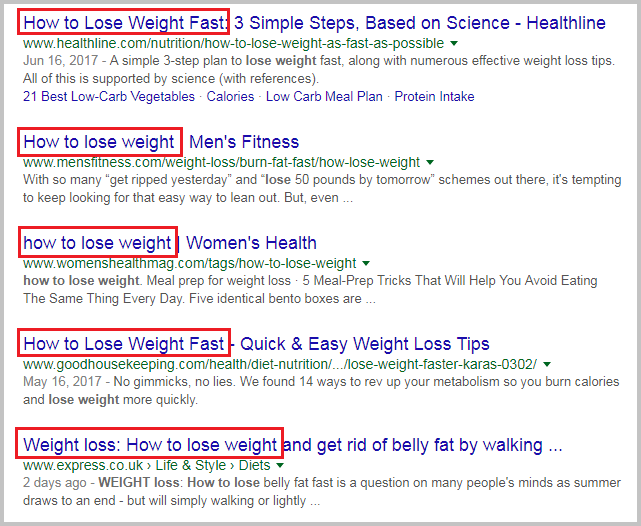
When we searched “how to lose weight”, all the results that Google shows, talk only about “How to Lose Weight” SPECIFICALLY .
Always remember being a blabbermouth is probably more dull than having nothing interesting to say.
2. Master the Opening Line
The millisecond a reader hits your page, he is likely to leave the page.
So, Hit them Fast. Hit them hard. With a STRONG INTRODUCTION .
The sole purpose of the first sentence is to entice the Readers so that they read the next sentence.
A well-proven tactic to start creating an Engaging Content:
- Ask a thought-provoking question Do you know what an article and a pizza have in common?
- Open with a “Quote” One day I will find the right words and they will be simple”
- Use Statistics According to a recently conducted survey, 99.9% of writers experience writer’s block.
- Tell a Story Charles Waltz was a cardiac surgeon in the 1940s when he began noticing a strange pattern among his patients.
See How Neil Patel write the opening lines of one of his Blog:
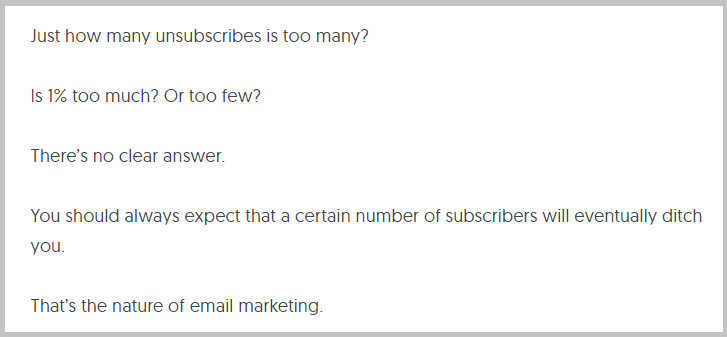
3. Less is More
Long sentences are cumbersome and boring- if difficult words come into them, they become spiritless.
- Short Words
- Short Sentences
- Short Paragraphs
They are easy to read and digest, lively and entertaining.
Readers are fickle and they will move on if they are faced with contents which are hard to follow.
Let’s look at Quick Sprout blog:
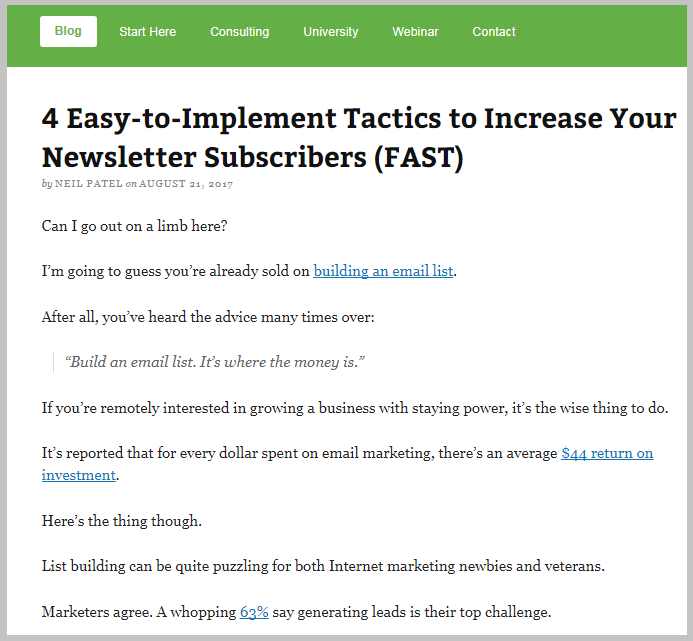
See how the Professionals are a big fan of the “Shorts”.
Break your posts with subheads and bullet points to keep your readers interested.
4. Use Comforting Words
Please don’t bore your Readers with difficult words.
Scrap jargons, cut scientific words and replace long words with short ones.
Plain simple English helps your Readers to comprehend your message.
Remember these simple things:
- Complex language doesn’t make you look more intelligent.
- Formality is tiring. So, don’t worry about your English teachers, start pleasing your Readers. Start a sentence with because, and, or, but.
- Use contractions to strike a conversational tone.
Your Readers like to be lazy.
Please don’t exhaust them.
They are not interested to learn your extensive vocabulary.
Just help them solve their problems.
5. Stop being Cold-Hearted
You are a human being with fluctuating emotions. Why stop your Readers from feeling them?
Who likes to interact with indifferent and dispassionate people?
Bring in the personal element to your writing. Don’t have an ostrich like approach.
Here are a few suggestions that will help you to engage your Readers:
- Choose a topic that you are passionate about
- Write as if you are talking to your friend
- Show your Readers the ways in which you are like them
- Vividly describe your stories
- Metaphors and sarcasm are two important tools
- Don’t be afraid of strong opinions
- Avoid passive tone
Readers have clicked on your post because they have some doubts and are faced with some real problems.
They want direct solutions, not any diplomatic approach.
The bottom line is:
Show your Readers you are one of them, faced with similar difficulties.
And show them the way to solve the problem.
6. Stop being Predictable: Be Vulnerable
A recent case study concluded that only 50% of the Readers actually go through an entire post.
You know why?
Because you are too predictable.
Don’t undermine the intelligence of your Readers. They have access to millions of posts that sound exactly like yours.
No matter how much you shout for your own post, your predictability is choking your voice.
Try to be Vulnerable.
Are your friends perfect?
Of course not.
We are all imperfect.
As Salvador Dali rightly said, “Have no fear of perfection—you’ll never reach it”
So, go for your weakness, your worries, your fears and what you think rather than using an overused predictable phrase.
Fire up your Readers with your vulnerabilities.
7. No need to be Long-Winded
Do avoid the subtle signs of tiresome wordiness.
Here is what you need to avoid:
- Redundant Adverbs and Adjectives:
When an adverb or an adjective is not adding any meaning or it’s not helping you to portray your story any better and more importantly if it’s not conveying an emotion—then simply CUT It.
- Excessive Words:
If you can scrap a word without changing the actual meaning of your sentence, go ahead and skip it.
Wearisome words that often can be cut are- in my opinion- that, just, actually, truly and very.
- Abstract Nouns: Don’t add unnecessary complexity.
For Example, don’t write “This blog topic is of complex nature” Just write “This topic is complex”
Simply recount your own experiences as simply as you can.
8. Please don’t be a Despicable Salesman
You know what makes a salesman pushy, don’t you?
Avoid being uninteresting and tiresome.
These are some irritating and novice mistakes you need to avoid
- Stop rambling on about your subject/topic.
The Readers are looking for solutions that they are going to get after reading your post on your chosen topic.
If your subject is a Disease, Readers are looking for the Remedies.
No point in telling them more and more about the Disease itself.
Show the BENEFITS to your Readers.
- Don’t waffle about irrelevant facts
You certainly don’t feel elated when pointless facts are thrown at you.
You feel bored.
Understand your Readers. They are no different.
Think about what keeps them awake at 3 in the morning.
- The most effective sales tool is Education. Use it liberally.
Educate your Readers about the subject. Tell them what they should do, how should they do and why should they do?
Teaching is the best alternative to sleazy sales.
9. Appeal to All the Senses
When you talk face-to-face with someone you use intonation and body language to show your feeling.
In a blog post/article, you only have words to attract attention and convey emotion.
That’s why you need to turn up your passion and use your words wisely to appeal to the senses of your Readers.
A sensory experience is memorable. A sensory writing is the same.
Our brain processes sensory words as if those senses are actually being stimulated.
People will forget what you said, people will forget what you did but they will always remember how you made them feel.
Feelings come from Senses.
Pro tips: Thinking how to develop quality content?
At MyTasker, we have proficient content writers who would love to make your web articles more engaging through their writing skills.
10. You Need to be Energetic
You know that energy is contagious.
Don’t you?
A monotonous voice lulls people to sleep.
Long and undulating sentences sooth your Readers with a comfortable flow.
Short sentences, however, are dynamic. They are abrupt. They awaken your Readers.
To make your writing more alluring, add a dynamic rhythm.
Interrupt long flowing sentences with short bursts of enthusiastic action.
Positive energy will initiate positive reactions!
11. Be Playful
Having a sense of humor makes you more desirable—especially if you make yourself the butt of your jokes.
How do you make your content sound funny?
Make a quick joke?
What if your readers do not find it funny?
You are not a comedian who has been paid to make his audience laugh.
The best part is:
You just have to be creative in your own way. Think of unique ways to tell your story or get your point across.
When you talk no one tells you what to say or how to say.
Be humble. Remember to make people smile.
12. Do Not Commit Crimes Against Readability
You have carefully crafted your content. Your article is informative, friendly and commanding attention.
Do you know that typographical errors can destroy the effectiveness of your precious words?
Leave alone the “Engaging” factor.
To make your article readable, avoid making stupid typographic mistakes:
Also, keep an eye on the Font of the post :
- Don’t make your font too fancy. They are hard to read.
- Don’t make the font too small. Tiny fonts strain your eyes.
- Don’t choose a font color that is almost similar to your background.
Always use a readable font that doesn’t let your Readers drown in dreary block of texts.
Be generous with White Space:
- Frame your text with white space
- Reduce your content width
- Add extra white space around sub headings
Do you know how your article bore your Readers to tears?
Characterless cliched photos. They make your content drab.
13. “A Picture is Worth a Thousand Words”
Do you know that something as easy as adding Images to your Blog post would increase your readers, followers, subscribers, and leads?
If you know it, then why don’t you do it?
Here is the kicker for you:
According to several industry studies, articles with images get a lot more views than articles without images.
There is no rocket science in knowing that human brains process images or any form of Multimedia better than texts.
But be a little careful.
Including lots of images doesn’t have an impact on search engine ranking.
So, choose few and relevant multi-media elements like images, videos, charts, infographics etc.
You might wonder:
“How many images should I have in my post?”
I would suggest, you use as many images as you need, in order to communicate your concepts clearly.
Pro tips: Want to make your content look visually charming?
At MyTasker, we have talented web designers who can serve your purpose by utilizing well-designed infographics.
14. Tell Interesting Stories
Why do you enjoy having a chat with your best friends or your favorite colleagues?
Because you love sharing small stories.
You might discuss a movie that you went to yesterday or a referee’s decision in Sunday’s match.
Your friends can talk about more than their specialty subject.
If your blog post/article discusses only your topic of expertise, you show yourself as one-dimensional person with a specific area of interest.
By sharing tidbits about your hobbies or personal life, you become a more interesting person.
When you draw analogies from personal experience, you give your Readers a glimpse into your life.
They get a feeling that they know you. And that’s how you start to bond.
15. Let Your Readers Fill in the Gaps for Themselves
Your Readers are independent thinkers.
They like to make up their own minds. So, allow them to draw their own conclusions.
For Example, I can tell you “I am a rebel”
You’d probably think “yeah yeah that’s what he likes to think”
This is why it’s better to give the facts and let your readers draw their own conclusion.
For instance:
- My high school teacher told me to study physics in college, but at the age of 17, I left my home to learn Chinese.
- Rather than choosing a safe color like blue for my website, I went for purple and orange—to be different and stand out.
Each of these statements paint a picture of who I am as a person—allowing you, as Reader, to make up your own mind about me.
16. Don’t be Too Professional
When given a choice, what would you rather do?
Hangout with your friends or attend a social gathering of elderly people?
I think the choice is pretty obvious.
The reason you chose your friends is simply because you love their company.
And the very reason you like their company is because you enjoy the casual atmosphere, their comforting communication tone and mainly because none of them lectures you in a professional authoritative tone.
Then why on earth would you write something in a tone that makes you inevitably a person from the hierarchy?
If you talk in a tone that does not resonate with people you have written the article for, you will soon be forgotten.
Because using an authoritative tone shows that you have considered your readers’ knowledge to be limited.
And you have made them feel subordinate to you.
If you hate the person who has ever made you feel inferior to him or her, why do you expect a reader to come back to you or even remember you when you speak like a boss?
Phrases like “you should” and “you need” SHOULD be strictly avoided.
Instead, use “why not” or “let’s try this” or “Don’t you think…”
Using a compassionate tone makes readers feel you are talking from your heart and you actually mean what you say.
They can connect to you much more easily.
Stop being a professional preacher, but try to be an eloquent speaker.
17. Bring Unexpected Gifts
You listen well, you ask questions and you give your Readers space to breath.
Sometimes Engagement requires a little more, doesn’t it?
Readers like to know you care about them and there is no better way to show you care than by bringing a gift.
Sometimes give away a free Cheat Sheet or an E-book that’s seriously useful for your Readers.
Have a look at Robbie Richards’s blog:

18. Don’t Doubt Yourself
Doubting yourself as an author is similar to committing suicide.
All of us have days when writing a single word takes a monumental effort.
And you hate the sight of a blank page on your screen.
Well, the best part is:
This is actually the best time to take a break.
Take a stroll in the park. Or simply sit and relax.
Don’t worry about an Engaging article. Engage with yourself. With your friends.
And one thing more:
Don’t use the phrase “In my opinion” too much. Your Readers already know that it is your opinion.
There is no point in speaking that way as it screams uncertainty when you cast doubt on the readers’ mind about the content you are presenting.
YOU are the EXPERT. Don’t forget.
19. Self-edit to Boost Charisma
When you eat you eat. When you sleep you sleep.
So, don’t worry about captivating your Readers when you are writing.
Don’t interrupt your flow.
Worry about being delightful, entertaining and engaging only when editing.
These tips will help you to add life to your dull drab content:
- Check your Engagement level
Don’t be a boastful ego-tripper. How often have you used the words you and your? Use the WeWe Calculator to measure enchantment
- Increase the number of really good bullet points
Short and to-the-point lists are more exciting than lackluster, solid paragraphs.
- Examine your Paragraph length
Aim for a maximum of five sentences per paragraph. Endless paragraphs are mind-numbingly tiring.
- Calculate the average number of words per sentence
Try to have fewer than ten words per sentence. Cut long sentences into two and scrap redundant words.
- Boost your content with trigger words
Make your texts livelier by including vivid and emotional words.
And if you edit your text only once, increase the number of drafts you write. You will be amazed how quickly this can make a boring content more appealing and engaging.
20. Create Something Enjoyable
You don’t watch a movie or read a book if you feel exhausted.
Nobody does.
So, create something enjoyable.
When your Reader is reading something, they should enjoy it first.
Your Reader should feel refreshed by reading all the information you have provided them.
The Reader should know where they are headed and in the end how they got there.
The ride should be fascinating and enjoyable.
Will Avoiding the Pitfalls and Doing What’s Necessary Help You Build an Audience?
The Gospel Truth:
There are no strict guidelines that will show you how to be Engaging.
No blueprint will tell you how to write an engaging article or a blog post.
No codes exist to keep your Readers glued to your content and never get bored.
You can always avoid making common and silly mistakes.
Be disciplined. Write with passion. And edit rigorously.
Display your enthusiasm to entertain your Readers.
If you even break a few rules (including these) do it with passion. You will receive love from your audience.
There you have it.
By now you are probably excited to write your next post.
Now, we want to hear from you:
Do you know any other strategies that have helped you engage your readers?
Or, maybe, you have some questions to ask.
Feel free to write it in the Comment section below!
Have you been already writing articles that are not driving the desired number of eyeballs to it?
At MyTasker we have a dedicated Writing Team that can write Engaging Articles on your behalf that will save you a lot of time from your busy schedule and will help you get the result that you deserve.
Leave a Reply
Popular posts.

Why Do You Need a Personal Assistant For Slack Management?
_.jpg)
How to Find the Best Virtual Assistant Services in Canada

Benefits and Trends for Search Engine Optimisation In Australia in 2024

Tips and Tricks For Video SEO Optimization in 2024

7 Reasons Why a Virtual Assistant is Your Secret Weapon for Managing AI Tools

Custom Web Design and Development Services for Maximum ROI

Benefits of Hiring Website Developers In The UK In 2024

Checklists and Benefits To Hire An Administrative Executive Assistant in 2024

A User's Guide To Hire The Best SEO Company In The UK
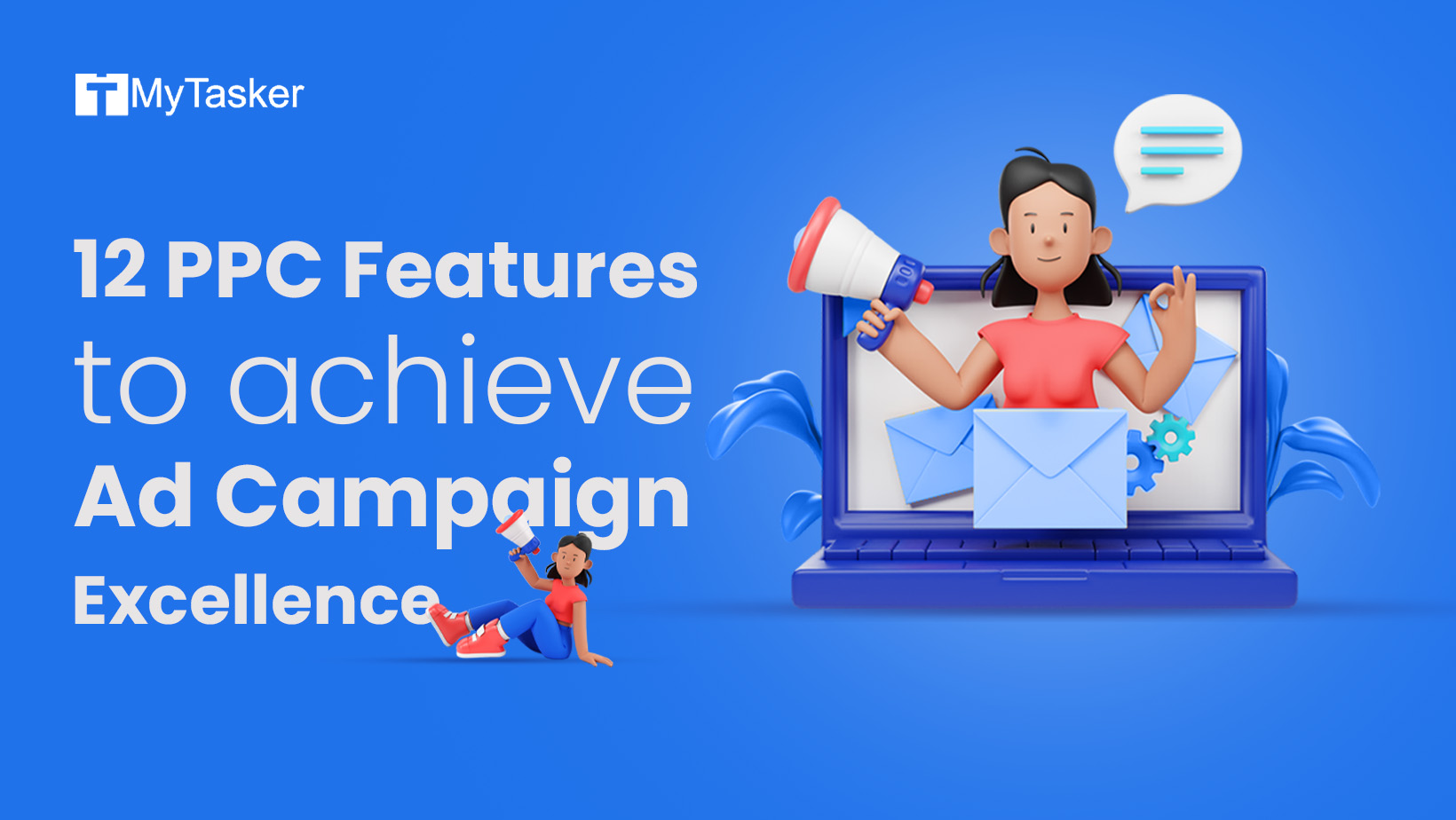
12 PPC Features To Achieve Ad Campaign Excellence
Join our newsletter.
Get Regular Updates on Business Trends, Tips and Exclusive Offers from MyTasker
Related Post
There’s a cool new way for men to wear socks and sandals.

- Share full article
Advertisement
Supported by
How to Write a ‘How-To’: A Step-by-Step Guide to Our Contest
We walk you through how to brainstorm a topic, interview an expert and write your own original “How to ….”

By Natalie Proulx and Katherine Schulten
“If you want to know how to do something, don’t just search the internet,” advises Malia Wollan , the longtime writer of Tip , a how-to column that ran weekly in The New York Times Magazine for seven years. “Instead, find a person who already knows how and ask them.”
That’s the challenge we are posing to students in “How to … ,” our new informational writing contest for teenagers : Interview an expert about (almost) any skill and then write an engaging and informative essay explaining it to readers.
In this guide, we’ll show you how to do that, with advice from the how-to expert herself, Ms. Wollan. You’ll start by getting familiar with the Tip format. Then you’ll brainstorm a topic for your own piece, find and interview an expert and, finally, put it all together.
When you’re ready, you can submit your completed how-to essay to our contest , which is accepting submissions through Feb. 14.
A step-by-step guide:
1. read some “tip” articles to understand the form., 2. look more closely at one piece., 3. brainstorm your topic., 4. find an expert., 5. conduct the interview., 6. put it all together..
What does a how-to essay look like? There are, of course, many ways to write one. For instance, you may have consulted wikiHow in the past, whether to learn how to make a realistic New Year’s resolution , fold a fitted sheet , reheat rice or do one of the many, many other things the site can teach you.
But since the inspiration for our contest comes from the Tip column in The Times, spending some time examining how it works is the logical first step in constructing your own.
Start by reading any three Tip articles of your choice.
If you don’t have a Times subscription, this guide can help. If you click on any of the 40-plus Tip topics we link here, you can access them for free, as long as you open them directly from this page. (Note to teachers: If your class does have a Times subscription and you are working from the column itself , be aware that some articles may not be appropriate. Please preview before sharing.)
Here are some options to help you choose:
Maybe you’re interested in learning a physical skill, such as how to build a sand castle , skip a stone , do the splits , tackle someone , spot a shooting star , crack a safe or find a four-leaf clover .
Or maybe you would rather up your emotional intelligence by, say, learning how to laugh at yourself , let your mind wander , recover from being ghosted , build an intentional community , be less fearful of the dark or forgive .
Perhaps you want to know how to do something practical, like break in boots , fix a brake light , mend a pair of jeans , use emojis , put out a grease fire , read faster , survive an avalanche , ask for an extension or find a lost hamster .
Or maybe you’d rather choose something offbeat, like how to start a family band , talk to dogs , communicate through facial expressions , make a love potion , build a fort , enjoy snowflakes , wash your hair in space or race pigeons .
After you’ve read three, answer these questions:
What do you notice about the structure, organization and language of a Tip column?
What predictable elements can readers expect to find in every edition?
If you did the activity above, you might have noticed some of these elements:
Tip articles are short: Each column is about 400 words and around four paragraphs long. Our challenge asks you to write something of about the same length.
The topics are usually ultra-specific: The skills described might be physical ( how to skip a stone ) or emotional ( how to forgive ), serious ( how to suture a wound ) or offbeat ( how to befriend an eagle ), but they are always small enough that they can be fully explained within the limited word count.
Each article features a single expert source: You probably noticed that each column begins and ends with a quote from an expert on the topic and that the same expert gives background and advice throughout the piece. For this contest, we are not requiring you to follow that same format, but we are asking you to find and interview an expert to inform your essay. And if you’d like to follow that format, you may.
The advice is practical, but the pieces are engaging to read. Each includes concrete tips for how to accomplish a task, but it’s never just a boring list of steps. The writer also provides context for the skill so that readers understand how and why they might use it in their own lives. And the quotes Ms. Wollan chooses from her interviews are often colorful or full of voice, as you can see in this piece about how to appreciate spiders .
They are written to the reader: The writer addresses the reader as “you,” and often uses the imperative to craft sentences that tell the reader what (or what not) to do.
Now let’s break it down even further. Choose one Tip article to read — either one you already read in Step 1 or a new one — and then respond to the following questions:
Whom does the writer quote in the piece? Why do you think the author chose this person? What makes him or her an expert in this skill? Do you think this person was a good source of information?
Look closely at when the author chooses to quote the expert and when she paraphrases the information that person gave. What is the difference? Why do you think she chose to quote the lines she did? Give some examples from the piece to explain your reasoning.
You may have been taught in school to cite your sources by using footnotes or by putting them in parentheses after you’ve referenced the information. That’s not how journalists do it, yet they still make their sources clear. Where do you see this in the piece you read? What punctuation or wording does the author use to tell us where certain facts and details come from?
Now let’s look at how the author balances explaining how to acquire a skill and showing why it’s needed: Underline or highlight in one color the lines in the piece that tell readers how to accomplish the task, and use another color to highlight lines that give context. What do you notice about the difference in language? What do you notice about the way these pieces of information are woven together throughout?
After reading this, do you feel confident that you could accomplish the task on your own? What tips, if any, did the expert share that surprised you?
When, where and for what purpose might you use this skill in your own life? What lines help readers see how this skill might be relevant to their lives?
What else do you admire about this piece, whether it’s the topic covered, the way it’s written or anything else?
Now that you better understand how to write a how-to, it’s your turn to write one!
First, of course, you must find a topic. For a Times Insider article about how the Tip column is made , Ms. Wollan and her editor, Dean Robinson, describe how they found their ideas:
She often gets suggestions. Many people ask her to write about navigating interpersonal relationships; Ms. Wollan acquiesced in the case of a highly-requested Tip on how to break up with a therapist. She thinks people come to her because “that stuff is hard to navigate and it’s also hard to Google.” Some of the more recognizable scenarios featured in Tip columns come from Ms. Wollan’s own life. She credits being a mother as the inspiration for columns on delivering babies , singing lullabies and apologizing to children . Mr. Robinson occasionally comes across ideas in his life, too. He suggested a piece on how to find a hamster in your house, he said, “because we’ve lost some hamsters.”
Brainstorm as many possible topics as you can for your how-to piece. Here are some ways to start:
Respond to our related Student Opinion forum . We pose 10 questions designed to help you brainstorm about what you’d like to learn to do, and what you already do well. We hope you’ll not only provide your own answers, but also scroll through the answers of others.
Ask for suggestions. What skills have your friends, family and neighbors always wanted to learn? What do they already consider themselves experts on? Keep a running list.
Get inspiration from the Tip column . As you scroll through the column, which headlines stand out to you? Could you take on a similar topic in a different way? Do any of them inspire other ideas for you?
Work with your class to compile as long a list as you can. After you’ve tried the three ideas above, come to class with your list, then share. Your ideas might spark those of others — and when it’s time to find experts, your classmates may have contacts they can share.
Once you’ve come up with as many ideas as you can, choose one for your piece and refine it until it is the right size for a 400-word piece.
These questions can help:
Which of the topics that you listed gets you most excited? Why?
For which do you think you could realistically find an expert to interview? (More on that in the next step.)
Which are already specific enough that you could thoroughly explain them in 400 words or fewer?
Which are big, but could be broken down? For instance, if you chose “learn to cook,” make a list of specific skills within that larger goal. Maybe you’d like to learn how to chop an onion, bake chocolate chip cookies, or build a healthy meal from the noodles in a ramen packet.
Which topics do you think might be most interesting to a general audience? Which feel especially unique, helpful or unexpected?
Maybe you chose your topic because you know someone who is already an expert at that task or skill. But even if you have, read through this step, because it might help you find someone even more suitable or interesting.
Here is how Ms. Wollan says she found experts for her column:
Ms. Wollan finds interview subjects by “just poking around” online and on the phone. Sometimes she has to talk to a few people before reaching the source she will feature in the column. She interviews most of her subjects by phone for about 45 minutes, sometimes longer. “I love talking to people who just maybe don’t care so much about being an expert,” Ms. Wollan said. Some of her favorite interviews have been with children and people in their 80s, who are often “looser and more generous with their advice.”
Who could be an expert on your topic? At minimum, it should be someone who is knowledgeable enough about your subject that your readers will trust his or her advice.
Some choices might be easy. For example, for her column on how to choose a karaoke song , Ms. Wollan interviewed a world karaoke champion; for her piece on how to recommend a book , she interviewed a librarian; and for her article on how to suture a wound , she interviewed a doctor.
Other choices, however, may be less obvious. For a column on how to breathe , Ms. Wollan interviewed a clarinet player; for one on how to slice a pie , she interviewed a restaurant owner; and for one on how to say goodbye , she interviewed a child-care worker who had bid farewell to many children during her career.
Brainstorm as many potential experts for your piece as you can and then choose one as the subject of your piece.
Your expert doesn’t have to be a world champion or the national head of an organization to have expertise. This person can be anyone with specialized knowledge of a field or topic. For example, if you were writing a piece on how to start bird-watching, you could interview someone who works at a local park or zoo, someone from a birding group in your town or a bird-watcher you know personally, such as a neighbor or teacher.
Like Ms. Wollan, you might start by “poking around online” for potential subjects. And you may have to talk to a few people before you decide on the person you want to feature in your piece.
If you are doing this assignment with classmates, now might be a good time to pool resources. Share your topics, and find out who might know someone with expertise in those areas. Remember that you are not allowed to interview your relatives — but you can suggest your woodworker grandma or your skateboarder cousin to someone who is writing about those topics.
When you reach out to people, keep in mind this advice from Corey Kilgannon, a New York Times reporter who has interviewed people for profiles and who was a guest on a Learning Network webinar about profile writing :
Tell the person what your goal is and where you’re coming from — that you’re writing a profile for a school assignment or a contest or a newspaper or whatever. Be straight with the person you’re interviewing. Some people might be a little nervous or shy about how this is going to turn out, or how they’re going to look. So tell them what it’s for, how long it’s going to be, that there will be photos, or whatever you can.
Once you’ve found the expert for your piece, it’s time to conduct your interview.
In “ The Art of Learning to Do Things ,” Ms. Wollan offers excellent advice that everyone participating in our challenge should take to heart:
If you want to know how to do something, don’t just search the internet. Instead, find a person who already knows how and ask them. At first, they’ll give you a hurried, broad-strokes kind of answer, assuming that you’re uninterested in all the procedural details. But of course that’s precisely what you’re after! Ask for a slowed-down, step-by-step guide through the minutiae of the thing. For seven years, I did exactly that — I called a stranger and asked that person to describe how to do a specific task or skill.
That might sound like a straightforward task, but you should come up with some questions — on your own or with your class — before you talk to your expert.
These might include questions like:
If you were to explain how to do this skill or task to someone who had never done it before, what advice would you give?
What are some common errors that those first learning this skill or trying this task often make? How can they be avoided?
What is your background in this skill? How did you get started with it? How did you learn how to do it?
When or why might a person have to use this skill? What are the benefits of knowing it?
You might also return to some of the Tip articles you read at the beginning of this lesson. Read them closely and see if you can guess what questions the writer may have asked to get the specific quotes and information the expert shared in the piece. Which of these questions might be helpful for your own interview?
Remember that interviewing is an art — and Times journalists can offer you advice.
In addition to asking good questions, it’s also your job as a journalist to make the interviewee feel comfortable, to listen carefully, to ask follow-up questions and to clarify that you have accurate information.
We have written our own extensive how-to on interviewing, filled with tips from Times journalists. Steps 3, 4 and 5 in this lesson will be especially helpful. Created for a contest we ran in 2022, the guide can walk you through preparing and practicing for an interview; keeping the conversation going while conducting it; and shaping the material into a useful piece when you’re done.
Finally, it’s time to write your piece. If you are submitting to our how-to writing contest, keep in mind that your essay must be 400 words or fewer.
Remember, too, that we are inviting you to take inspiration from the Tip column, but that you don’t have to copy its form and structure exactly — unless you’d like to. Most important, though, is to find a way to write what you want in a way that sounds and feels like you.
That said, there are a few key elements that are important to include, which can be found in our contest rubric . Below, we share some examples from the Tip column to illustrate these elements.
Introduce your expert source.
The person you interviewed will be the main source of information for your piece. Ask yourself: How will my readers know this person is an expert in the skill or task? What information should I include about this person to make my readers feel that they can trust the person’s knowledge and advice?
Here is how Ms. Wollan introduces her expert in “ How to Skip a Stone ”:
“Throw at a 20-degree angle,” says Lydéric Bocquet, a physics professor at École Normale Supérieure in Paris.
Later, she further explains Mr. Bocquet’s expertise:
Bocquet’s quest to understand how this happens — how a solid object can skim along water without immediately sinking — began more than a decade ago, while he was skipping stones on the Tarn River in southern France with his young son. “He turns to me,” Bocquet says, “and asks, ‘Why does the stone bounce on the water?’” To answer that question satisfactorily, Bocquet and his colleagues built a mechanical stone skipper and analyzed the angle of each toss using high-speed video. They also created a set of mathematical equations to predict the number of skips.
How do you know Bocquet is an expert in skipping stones? Do you, as the reader, trust him as an expert on this topic? Why or why not?
Explain how to do the task or skill.
The heart of your piece is, of course, your explanation. You might start by making a list of steps that your expert source shared and then paring it down to the most essential information.
Ask yourself:
What instructions are crucial to the reader’s understanding of how to accomplish this skill or task?
What did the expert share that I found surprising or may not have thought of?
What details can I leave out, either because they are not very interesting or because they are less important?
What sequence for the steps make the most sense for my readers?
Consider the first paragraph from “ How to Build a Sand Castle ”:
“Use your architect mind,” says Sudarsan Pattnaik, an award-winning sand sculptor from Puri, a seaside city in India. If you’re building from memory, first envision your castle. For Pattnaik, who is 42, that means well-known Hindu or Muslim sites. “I have made so many Taj Mahals,” he says. Build with fine-grained sand already wetted by an outgoing tide. “Dry sand is too, too difficult,” Pattnaik says. Bring tools: hand shovels, buckets with the bottoms cut off and squirt bottles. Tamp wet sand into your bucket molds, setting one layer and then the next, like bricks. Sculpt architectural details from the top of the mound down. Bring reference photographs if you’re aiming for realism.
See if you can identify all the steps to making a sand castle that the writer shares in this paragraph. What do you notice about the order? What, if anything, do you think the writer might have left out, and why do you think she made that choice? What tips did you find most surprising? What do these lines add to the piece?
Notice also the grammatical structure Ms. Wollan uses: “Build with fine-grained sand”; “bring tools”; “tamp wet sand into your bucket molds”; and so on. This is called the imperative mood and is often used when telling others how to do something.
Include at least one quote.
If you are submitting to our contest, you need to include a minimum of one direct quote from the expert. Ask yourself: What quotes from my interview are so interesting, important, surprising, informative or colorful that I need to find a way to fit them in?
Look at “ How to Do the Splits ,” in which Ms. Wollan interviewed Kendrick Young, a professional sumo wrestler:
Start by stretching every day after you get out of the shower (heat increases muscle and ligament flexibility). Wear comfortable, stretchy attire. “Definitely don’t try to do this in jeans,” Young says. Sit with your legs spread as wide as you can. Once you can do that without hunching, begin to lean toward the ground, exhaling as you go. “You don’t want to be bending over a big pocket of air in your lungs,” Young says. It might help to have someone push down on your midback (historically, sumo wrestlers often stood on one another’s backs to force the body to the floor).
Why do you think the writer chose to include these two specific quotes in the piece, while paraphrasing (or writing in her own words) the rest of what Young said? What additional context did the writer provide to help us understand the purpose and relevance of these quotations?
Provide a purpose for reading.
Remember that a how-to essay is not just a list of steps; your readers should also understand how this topic might be relevant to their lives. Ask yourself: Why should a reader care about this skill or task? Where, when or for what reasons might someone want or need to do it?
Consider the last paragraph in “ How to Start a Family Band ”:
To be in a family band, you have to be prepared to spend a lot of time together, actively working on cohesion. Music can act as a kind of binding agent. When they’re not in quarantine, the Haim sisters see, or at least talk to, each other every day. “Instead of camping as kids, or going hiking, it was like, ‘OK, we’re going to practice a few songs,’” Danielle says. “It was definitely my parents’ ploy to spend more time with us.”
What reason does the writer provide for why a reader might want to try this activity? What additional background does she share from the expert, Danielle Haim, to help explain why a family — even one that might not be musical — may want to start a band together?
Submit your final piece.
Once you’ve written and edited your essay, give it a title (“How to…”) and submit it to our contest by Feb. 14. We can’t wait to learn the skills you’ll teach us!
Natalie Proulx joined The Learning Network as a staff editor in 2017 after working as an English language arts teacher and curriculum writer. More about Natalie Proulx
Katherine Schulten has been a Learning Network editor since 2006. Before that, she spent 19 years in New York City public schools as an English teacher, school-newspaper adviser and literacy coach. More about Katherine Schulten
10 Ways to Make Your Content More Fun to Read
Updated: August 27, 2017
Published: October 02, 2013
"But I write about mortgages (or some other similarly ' boring ' topic) -- there's no way I can possibly make my content fun to read." For many of you in the B2B boat, this is probably an excuse you can easily relate to.

But I'm going to fight you on this one because, hey, I'm a B2B content creator, too. And we sell marketing software over here -- not exactly the sexiest product to peddle, if you ask me. But we've heard time and time again from our readers that they love coming back to our content because we make it fun and interesting to read about marketing.
Even companies in "boring" industries need to create content. But the thing is, people who read about mortgages aren't waking up one day thinking, "I think I'm going to read about mortgages today!" They read that content because they need information about mortgages -- maybe because they're considering buying a house. So why not make the otherwise boring, tedious process of reading about mortgages (or insert your industry here) a little bit more interesting -- maybe even fun -- for them? After all, everyone loves being entertained , right? And injecting a little bit more fun into your content might even set it apart from some of your competitors' truly boring content.
So without further ado, here are 10 smart ways to make your content more fun to read.
1) Tell a Story
You may be writing about some boring industry concept, but that doesn't mean you can't weave in a little storytelling. Telling stories or anecdotes is a great way to engage your readers and make your content relatable. It also makes your reader realize that behind that stuffy industry concept is a real person who's writing it.
Don't be afraid to draw from personal experiences -- just be sure they relate back and transition well to the topic of your content. Here's an example of how a colleague of mine, Ginny Soskey, incorporated a personal anecdote to set the stage for the 10 free design tools she highlighted in this post :

2) Crack a Joke
This one is a little tougher, as it requires a sense of humor ;-) That being said, you don't have to be the funniest person in the world to make readers smile here and there. Sometimes, your choice of words or a little parenthetical quip will do the trick. Just loosen up, be yourself, and if you're not sure whether something is actually humorous, run it by an honest co-worker. Take a look at how my colleague Corey Eridon cracks a joke in a post about a pretty dry topic (CAN-SPAM) .

3) Use Your Introduction Wisely
The intro of your content is one of your best (and easiest) opportunities to be creative and fun. What's more, this is the perfect place to do it, since you want your introduction to be compelling and interesting enough to get your readers' attention (no easy feat, believe me).
And, hey -- whaddya know? Intros also happen to be great places for cracking jokes and telling stories! You can also consider being empathetic or coming up with another creative way to introduce the reader to what lies in the content ahead of them. The goal is to get the reader to emotionally connect with or relate to the content so they want to keep reading. For more tips about writing great introductions -- and an example of a great introduction in and of itself -- check out our post, " How to Write an Introduction ."
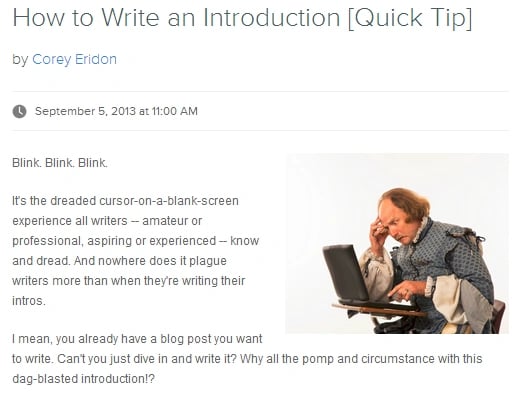
4) Watch Your Tone
Boring topics will sound even more boring if you write with a bland tone. In most cases, you can get away with a conversational, informal tone in your writing -- especially if the writing is going on a blog, not in an academic paper. Think about how you would communicate with someone verbally, and adopt that tone in your writing. Your readers will thank you for content that, albeit educational, is also easy to read and get through. Isn't the following so much more enjoyable to read than it would've been had we stopped after that first little paragraph?

5) Use Fun, Hypothetical Examples
On the content team, we like to call these "unicorn examples." Here's why: For a while here at HubSpot, we had kind of a unicorn thing going on. The unicorn even turned into somewhat of a mascot for us (we called him Hu). In any event, every time we were looking to enhance our blog content with a hypothetical example to explain a concept more clearly, the example went something like this:

Off the wall and totally fun, but still very relevant and helpful in getting our readers to understand how to use analytics to identify the topics they should be blogging about -- the topic of the post it appeared in .
This approach works particularly well when you're writing for a variety of personas, because it levels the playing field (since you're using an example that doesn't just apply to one particular persona and not the rest).
6) Hijack a Meme
I'm not gonna lie -- I loooove memejacking. Meme-what, you ask? If you're not familiar, a meme is quite simply a concept, behavior, or idea that spreads, usually via the internet . Memes most commonly manifest themselves in visuals such as images, pictures, or videos, but they can also take the form of a link, hashtag, a simple word or phrase (e.g. an intentional misspelling), or even an entire website. If you're still having some trouble grasping the concept, check out some of these popular memes . I bet you'll recognize a few.
What's great about doing some memejacking in your content is the fact that memes are inherently fun, engaging, and wildly popular. But how exactly does one "hijack" a meme? Luckily, we've written a detailed blog post on the subject that provides some great memejacking tips and tricks. The great thing is, you can either go big like Moz, which announced its Series B funding through an entirely meme-themed news release ...

... or like we did with our post about marketing pick-up lines , as told through popular memes.
Perhaps you can be a little bit more subtle, sprinkling in a meme reference here and there to add a little fun to your content, like we did in our recent post about what the best bloggers do :

7) Incorporate Pop Culture References
Speaking of popular memes, how about a little pop culture reference to liven up your content? Here's an example of how we did this recently in a post about Google's move to encrypt all keyword search data -- not exactly the most uplifting article for marketers, but there was no sense in us being total Debbie Downers about it. A little humor, it turns out, is a great way to help cope with bad news :-)

Just be mindful of your target audience with this one (and come to think of it, with memejacking, too). If the majority of your audience won't have any idea who or what you're referencing, it'll be a total flop. Now, you won't be able to appeal to everyone, but use your best judgment and keep your personas in mind when making pop culture references like these.
8) Get Creative With Images
You know what they say: "A picture is worth a thousand words." Imagery is not only a great way to improve the social shareability of your content , but it can also add a little fun to it, too. Take some extra care in choosing images for your content. Can you use them to enhance a joke you made or crack a new one? Can you simply select a relevant image that's already funny in and of itself? Can you overlay a caption or add a clever thought/talk bubble like we did in the example below (which can be found in this blog post )? Don't be afraid to get creative!
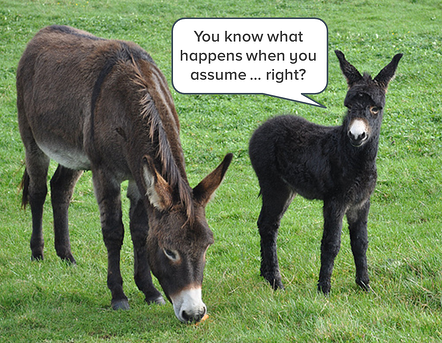
( Image Credit: horslips5 )
Just be sure you have the right permissions to use, adapt, or modify the images you're using. Use photos appropriately licensed under Creative Commons (but be careful ), or purchase stock photos. (Bonus: We have 235 stock photos available to download for free here and here that you can adapt however you'd like!)
9) Add a GIF
How fun is the GIF pictured below?
We added it to the blog post and landing page for our marketing trivia game offer to give it a little oomph and emphasize its game show-esque look and feel. Animated GIFs are great for catching readers' attention and making your content just a little bit more interesting. To learn how to create an animated GIF, check out this simple how-to blog post . And to learn more about how to use them in your marketing, this post will do the trick .
10) Hide Easter Eggs
No, I'm not talking about colorful, hard-boiled eggs here. In the internet world, an Easter egg refers to " an intentional inside joke , hidden message, or feature." And from the reader's perspective, there's nothing more fun than a well-hidden Easter egg. You know why? Because there's a sense of exclusivity associated with them. It also makes you feel wicked smart when you actually discover one! Hiding Easter eggs adds a fabulous level of interactivity to your content, and it's also a great way to engage your readers and get them to come back.
One of my favorite Easter egg examples was hidden in the launch campaign for the return season of Arrested Development . In these examples, the brilliant marketers of the show hid messages to fans -- quotes from character Tobias Fünke -- in the code of the microsites that were created for the campaign:

(The above message reads, "Are you looking at my privates? Shame on YOU sir!")
You don't have to get as fancy as hiding messages in your website's source code either -- even just hidden messages that certain personas or long-time readers of your content would "get" can be a fun, yet simple, approach. Just be sure that any Easter eggs you hide not only appeal to your target audience, but also enhance (not take away from) your content.
What other suggestions do you have for injecting more "fun" into your content?

Don't forget to share this post!
Related articles.
![how to make your article more interesting How to Write a Memo [Template & Examples]](https://blog.hubspot.com/hubfs/how-to-write-memo_0.webp)
How to Write a Memo [Template & Examples]

9 Simple Ways to Write a Good Introduction Sentence

Comma Rules for Clear Writing (with Examples)

How to Write an Introduction: A Simplified Guide

How to Become a (Better) Editor: 13 Editorial Tips
![how to make your article more interesting How Long Should Blog Posts Be in 2021? [New Data]](https://blog.hubspot.com/hubfs/how-long-blog-posts.webp)
How Long Should Blog Posts Be in 2021? [New Data]

How to Improve Your Writing Skills and Escape Content Mediocrity (Infographic)

How The Flesch Reading Ease Test Can Help You Write Clear and Concise Copy

HubSpot's Guide to Becoming a Better Writer
The collection you've been looking for. No royalties, no fees, no worries.
Marketing software that helps you drive revenue, save time and resources, and measure and optimize your investments — all on one easy-to-use platform
- Relationships
10 Ways to Make Your Writing More Interesting for Readers
It can be a little intimidating to think about writing for the reader. When you start, it’s almost like a swimming lesson. You don’t know where to look, your hands are shaking, and there are not too many people around to help you. Writing is a stimulating activity that allows you to express your thoughts and feelings better. It can be fun and may help you find creative ways to think and experience life. Whenever you author an article or a blog post, you want to make it easy for any reader. That’s why you need to create a hook. You can accomplish this by having a more exciting introduction or by including some statistics and data for the reader to make sense of what they’re reading. To make your essay more interesting, try the following measures.
- Use an active voice.
- Use quotes from different sources and combine them to add more detail.
- Build your sentences using parallel construction so that they have strong links between each other and form a logical whole.
- Add more action verbs to your writing. Verbs such as explain, describe, and think about are more engaging than verbs like say or tell.
However, it can get too simple and boring at times. Let’s face it, unless you are writing a book or sending out magazines, commercials, or any other sophisticated material, the most important thing you need to do is make your writing more readable. The following ten ways suggest how to make your writing more interesting.
How To Make Writing More Interesting
- Use strong verbs : Your readers will enjoy reading your content more if you use strong verbs that are easy to understand. Rather than using the same phrases throughout your article, use interesting and relevant words. You will make your readers want to read more. Strong verbs can make the writing more exciting and evoke the right mood and tone. They break up the paragraphs and help readers understand what the text means.
- Vary sentence structure : Different types of sentences are needed for different tasks, such as informative or persuasive. They include support and indirect statements. A type of white space between sentences helps readers concentrate on the meaning of the main phrase. You can vary sentence length to create more exciting writing without having to change your topic to keep it flowing and professional. Your style is extremely important. Employ simple and clear sentences that are easy to follow. If you use a lot of words with little meaning, it will make your writing sound uninteresting to readers.
- Keep your sentences short and sweet : Your writing is less interesting if you stick to simple, predictable sentences. Vary them by being creative. They range from short ones that are brief and to the point, to long ones where each sentence has a specific purpose.
- Embrace synonyms and antonyms : You should start by figuring out what your readers can expect and then reduce the unexpected. One way to do this is to use synonyms and antonyms. If you are working with a specific topic, you may already know how many synonyms and antonyms exist for it. Even then, you need to go beyond that level of knowledge. Consider the opposite of your subject matter as well. For example, if your story is about a hobby, then you might equally consider writing about the bad habit or thing that people see in their spare time.
Writing has always been a way to express yourself and share your thoughts with the rest of the world. It is the reason why it is important to write your essay in such a way that makes your audience understand the message you want to get across. The best way to do this is by using professional writers who are skilled in writing essays and can produce quality work on time. The most important thing you need is to write appropriately without veering off. At a professional writing service online, skilled academic writers combine their knowledge with years of experience and use it to help clients get their work done successfully. You can achieve better grades for your academics with assistance from them. Students who seek help with the site comfortably compose quality papers that get them through college. Their writers are experienced regarding topics related to business and finance, psychology, anthropology, law, and politics. They have enough knowledge to help needful learners make sense of them as well as succeed in their assignments.
More Tips on How To Make Writing More Interesting
- Avoid clichés like the plague : It is not only boring but irritating to read. If you must write it in your paper, make sure that you do a good job of making it different from other papers.
- Lose adjectives and adverbs like a nemesis stick to a superhero’s spandex suit : Sometimes, writing is about action. When you make your readers feel part of the story, you can create a powerful and memorable experience for them. Use common sense and avoid unnecessary adjectives and adverbs, especially when it comes to describing something that is gone. The fewer words you use, the more powerful your writing will be.
- Describe actions, not thoughts or feelings : Action is always more exciting than thought. Sometimes, it’s hard to describe thoughts and feelings. Describing actions can make my writing more relatable, for example. Focus on what your hero or heroine is doing, not how they are feeling.
- Be aware of passive voice : Slow down and make your job easier by developing an active writing habit, right from the start. Write every day, don’t edit yourself, and put your best thoughts on paper first thing in the morning. If you’re not comfortable with writing yet, try reading a few pages of something you enjoy in your academic life. Know that great writing needs to be interesting. Try keeping a journal on topics that pique your interest and see where they take you. Do not consider it “writing” when you are just repeating someone else’s ideas. So, use facts to support arguments and make your essay more interesting.
- Be specific : Effective writing is simple. A first draft outline lists the main points you want to make in your essay. It serves as a roadmap for how you want to better organize your thoughts and ideas. A strong introduction will bring readers into the essay’s topic early on, establishing that even though reading has begun, there are still multiple layers that need to be explored.
- Make it a habit to read good books, and maybe write one yourself : Writing is like a dance. You can tell it’s a dance if there’s music and everything, but some movements are more impressive than others. A writer dances with words, and a good one uses their words to communicate not just facts or ideas but emotions, actions, and thoughts. The above are good tips on how to make your writing more interesting.
How to Make a Story Interesting? 14 Critical Elements!
August 7, 2023
Many writers find it challenging to create a story that is interesting throughout the whole thing. How can I make my story more interesting is a complex question many newer writers especially find challenging.
While there are many ways to make a story interesting, not every technique will work for every story. Create a strong plot, fleshed-out characters, action, suspense and more while focusing on the planning, writing and editing stages separately. Be thorough on each step before moving to the next.

Table of Contents
Craft a Tight Plot
The number one thing to do before writing anything is to craft a tight plot.
Writing without really knowing in detail where the story is going will likely result in a lackluster tale that doesn’t feel cohesive.
Some writers find that very little planning and just writing by the seat of their pants works for them. However, this sort of writing is difficult to edit and may result in a long process of fine-tuning the story.
For the best results you need to spend time figuring out the key events of the story and make sure they are exciting and build up anticipation in your readers. Then, build these key events into a full story by adding more scene ideas and figuring out the best length for each part.
The journey from beginning to end should be something your characters must jump through hoops to achieve.
For each of these plot points, start by writing out a brief outline of what you want to happen for each section before actually writing the first word.
By the time you have finished the plotting section, you should have a detailed plan of the whole story.
You can always add in any ideas that you come up with later, once the story is underway or edit previous sections to fit your overall plan, but you need to have a well-crafted plot full of action, tension, risk, rewards and so on clearly planned out before you start.
It can be hard to add these items later so getting it right from the beginning is paramount to a good story.
Related reading:
Top Websites for Writers: 10 Online Writing Communities
What are The Elements of a Story? Learn The 4 Most Critical
Fleshed Out Characters
Your characters are the heart of your story, and if they aren’t compelling people, it will be challenging to make your story interesting.
It is important to create realistic people with complex motivations, fears and ambitions.
By creating interesting characters that the readers care about, you will add depth and interest to your story.
It can be constructive when thinking up ideas for your characters to pretend that they are real people because then you have an idea of how they would act in the situations you place them in.
For example, if your character is extremely shy and introverted, it would be unrealistic for them to take on an adventure that takes them into unknown lands with lots of strangers without a very good reason.
In this case, it would only work if the plot required such a character to be brave or if they were so desperate to go on the adventure that they overcame their fear and went anyway. The plot needs to have an infection point to force them to make that decision.
Then create strong characters, starting by brainstorming character traits that you want them to have, and add backstories about their lives before the story begins in your book.
Figure out their motivations, fears and ambitions and what they really want out of life.
By doing this for each character, you will have a whole cast of realistic people that the readers can identify with and add interest to your story.
Hooking Opening
Time to start writing.
Your opening chapter or section is crucial because it sets the tone and hooks the reader into needing to continue with the rest of the book.
You can put readers off very quickly by writing a dull, boring or confusing opening.
Start by thinking about what your story will be and consider how you want it to make the reader feel.
The first few pages should be exciting and draw readers in so they want to keep going.
To do this, you need to hook them with a really interesting description of a scene, a character’s internal thoughts or perhaps a start of the mystery to be solved.
For example, you could write an opening sentence that sums up the essence of your book and lets readers know what they are in for:
The boys looked at each other in fear as they felt the ground beneath their feet rumble with the approach of whatever was in the dark.
This kind of opening works because it creates a sense of tension and raises questions about what is going to happen next. Who are the boys? Where are they? Lots of questions from one sentence. Build on this in the first few paragraphs and pages to hook readers.
Add Lots of Action
Next, make sure that your plot has plenty of action and movement.
Even the most well-planned and crafted story can become tedious without action to drive it forward.
It is easy to slip into slower, more reflective moments, but these need to be few and far between if you want readers to stay interested.
Action is sometimes pictured as big and showy, like car chases, jet fights, foot chase through the subway, etc.
You do need plenty of action sections throughout your story, of course, but action can be on a small scale as well but has a more significant impact than just a simple description.
So you would avoid describing mundane details such as characters doing everyday activities such as having a meal, going to work or getting ready for bed.
Instead, try to think of an interesting way to essentially write the same event.
Let’s use a simple example of something mundane:
‘Do you want a cup of tea?’ her mother asked. ‘No thanks,’ Julie replied, ‘I’m about to leave for work.’
This first example is very dull and would be much better if you wrote it as a character taking action.
‘Do you want a cup of tea?’ her mother asked. Before her mother had finished the sentence, Julie was already out of the door and calling over her shoulder that she would get a drink from the cafe near work.
Even though this second example doesn’t have much more detail and is basically the same, the slight change to a character in action adds a sense of urgency and makes it more interesting to read.
Your characters should be doing exciting things as often as possible. This will keep readers hooked and make your writing more interesting as you think outside the box and put your own spin on things.
Generous Amounts of Suspense
Suspense and the tension that goes with it are a great way to keep readers interested in your story and it should feature throughout.
Make sure that there are plenty of twists and turns, whatever happens, and never allow the tension to drop.
Suspense works best when it is delivered in small doses, so sprinkle it throughout your story rather than dumping it in big chunks here and there.
To keep up the suspense, keep vital information from the reader, so they always wonder what will happen next or who to trust.
Let’s go back to our simple example of someone getting ready for work again:
‘Do you want a cup of tea?’ her mother asked. Julie stopped in the hallway and turned to face her mother, ‘I’m sorry, what did you say?’ she replied, looking confused.
This works because it creates a bit of suspense by withholding information from the reader. In this case, Julie’s confusion. Why is she confused by a simple question? What was she thinking about instead?
If we had been told immediately that something was wrong, we wouldn’t have been able to build suspense. So instead, we have a small suspense step building up to whatever more significant plot issue Julie will have.
There are a number of ways to achieve this kind of effect and it is essential to remember that your writing must never be predictable if you want readers to be hooked.
The best writing is that which makes someone want to turn the page and find out what happens next. So remember that every line you write should create some kind of tension, whether it is small-scale suspense or something more dramatic like a character racing against time to save someone’s life.
Write Faster Slow Poke
One thing that can make it difficult to create suspense and for your writing to become interesting is if you write too slowly.
It can be very difficult to keep a flow going if you are a slow writer who only produces a few hundred words a week. How will you keep up the story pace if you take a year or more to create a story?
It is not impossible, of course, but you are making it much harder for yourself.
Try to write as much as you can regularly, so the story is fresh and exciting to you. This will come across on the page and keep your readers hooked.
Set yourself a goal of how many words you want to fill in a specific time frame. This can be as little as 200 or 500 words per day to as much as 2,000 or 3,000 for those who have more time on their hands.
Setting word count goals encourages you to write faster and helps your writing become interesting because the story pace will be much higher.
Try to aim for 10,000 words per month if you are a beginner. This is achievable for someone who writes every day but should mean that your writing is more likely to flow better and more interesting.
Proper Pacing
Your story needs to move at a reasonable pace otherwise, it becomes boring.
Writing that moves along too slowly will bore even the most patient reader as they wait for something exciting to happen and they will give up on it.
So make sure you keep the pace as fast as possible at all times.
One way to do this is by avoiding descriptions of mundane things, such as characters doing things they would normally do, especially when there’s no point to it.
In the example above, Julie going to work every day wouldn’t be a good place for suspense unless it has a point in the plot. Don’t just include it because that is what she does in the morning. It should be cut out if it does not have a purpose later.
Instead of describing the character doing something unimportant that would slow down your writing, just skip ahead and get straight to the action. This will keep your writing fast-moving without leaving too much out, making for better quality fiction overall.
Help! How Can I Progress My story? 12 Steps to a Killer Plot
Meaningful Dialog
Dialog needs to be very well written. Many readers are aware of how bad dialog is immediately and it will put them off your book. Poorly written dialog just stands out.
Dialog needs to be meaningful and should not just consist of one line conversations between characters.
Look for opportunities to give the characters a purpose in what they are saying.
Read out your dialog and see if it sounds natural. Try to imagine how they would be feeling. Would the emotions come through? Then, rewrite the dialog so it gives you a better idea of who your characters are.
Also, make sure to create dialog that is a little different for each character. They will not all sound the same so make sure there are small differences in what you write. It will sound very flat if all the characters talk the same way.
Just having conversations in your novel is not going to make for exciting reading. So keep in mind that every line should have some kind of meaning and purpose.
Aim for meaningful, smooth dialog that flows well, as this will make your writing more interesting to read.
Edit Out The Filler
Once you have finished your first draft, it is typical that you will find lots of areas that don’t add anything to the story during the first edit.
There are often things your characters do, descriptions of settings and even little bits of dialog where they can be cut out. Everything should have a purpose when you write your first draft, but in some cases, it is not immediately obvious why something was there in the first place.
You typically make huge improvements between draft 1 and draft 2. The advantage is that you now have a full picture of the story as written and can work to enhance it.
That means going through the entire manuscript and thinking about all the different elements, what they do, and how they affect your writing. Then you want to look at everything that doesn’t add anything, cut those out and then smooth over the remaining parts, which now have a bit more impact.
This will make for much better quality fiction overall as you are focusing on the best material.
Know Your Audience
Writers should always try to connect with their readers and know who they are writing for. Getting to know your audience can help you better understand them and, therefore, help you write something more enjoyable for the reader.
An obvious example is that if you are writing a children’s book, there may be certain words or situations which aren’t appropriate, so knowing your audience means you can avoid this and keep things simple and straightforward for the reader.
For more adult-oriented books, knowing your reader can help you use language suitable for them and not alienate or confuse them by using complex words or concepts.
When you write for a specific audience and keep them in mind, you are able to write something more relatable. That will help you engage with your readers, creating a great relationship between writer and reader.
So when it comes time to edit, think about who you are writing for. How old are they? What do they know? Then use the information you have gathered so far to enhance your writing.
Always keep your audience in mind when writing and editing to create a better experience for them.
It makes the whole thing more interesting as you know who you are writing for so you can concentrate on including essential elements that will interest your reader specifically.
Skip Some Rules
Writing has many rules that, as a beginner, you generally should learn and use, at least as you develop your skills and writing technique.
But don’t be discouraged if you aren’t following them all because it is ok to break some rules when writing fiction.
The good news is that there might be something that could make the book better if you break one of the many rules.
This can make your writing more exciting and engaging for the reader as you push the boundaries and take them on a journey where they never know what will happen next.
Once you have learned the so-called rules and are getting skilled as a writer, you can start to think about how you can break some and make something more interesting as a result.
So feel free to ignore the rules and experiment a little as you write.
This can be a way to separate your writing from other books in the same genre and stand out when it comes to being published.
Defeat Writers Block
Many writers have issues writing at some point in their careers. Whether it is a lack of motivation to write regularly, ideas that do not seem very good or are just stuck on developing the scene.
Everyone gets writers’ block at some point and it can be very frustrating for someone who is using writing as a career or just has an urge to write often.
One thing that works for some is to just write anything at all literally. Just getting the mind moving to produce anything for some people will quickly restart the process for what you really should be writing.
Sometimes taking a break from your current project can help, so give that a try.
If you really have no idea what to do next, it might be a good idea to think about other concepts you can maybe turn into future projects.
Sometimes your mind gets hooked on the current project and it is hard to move on, so taking a step back can allow for better inspiration when things come around again.
By taking a little break and recharging your batteries by doing something completely different such as getting some fresh air, gardening, or a short trip somewhere, you will be able to come back to the writing process with a new perspective and renewed interest.
Get Input Early and Often
One of the best ways to make sure your story is interesting and improve it is to get other people involved.
When other people are interested in your project or story, it can motivate you to work harder on it and ensure that you are getting the very best out of it.
Having other people read through your story will also give you different perspectives, which could help you find areas that need improvement.
As soon as you have a reasonable draft, get some friends or family to read it and give you some feedback.
You will be able to see where the story needs development based on their comments and how they felt about it overall.
Trying out different writing styles is one of the most effective ways to make your story interesting, as you can try out different tones, language and characterization to really push the boundaries and give the book a unique feel.
It is important to note that this should not be done too early in the writing process because you will need feedback on each chapter or scene.
Also, try using different techniques for characters so they are interesting but realistic which is something that everyone likes to read about.
Join a writers group to get feedback from fellow writers who have experience in writing. This can be a great way to get support from people who are in or have been in the same position you are in your learning journey.
They will generally be only too willing to help you make your book stand out from the crowd when it comes to publishing.
Impactful Finale
As you plot out your book, make sure that you have a very well-planned and executed finale.
This should make the reader feel a wide range of emotions to leave them with a lasting impression.
It can also help if you tie up most, but not all, the loose ends, which will make your story more interesting as some elements are open for interpretation.
You want to leave people wanting more so they immediately start asking for follow-up.
So there are 14 essential elements to keep in mind as you start your journey. Many of them are easily understood but can take some practice to learn and implement well.
Just work on a few at a time and keep improving. You will soon find that these elements are part of your writing habits.
The most important thing is to enjoy yourself and have fun with it.
If you are struggling with any part of this, don’t worry too much about it because in time, it will all come naturally to you when the process becomes more enjoyable than difficult. Good luck!
Thank you for reading
Contact us:
Got an interesting story you think we should cover?
Contact us at [email protected]
Is Writing a Book Hard? 8 Tips To Your First Draft
What is the style of writing 8 key styles you have to know.
As an Amazon Associate I earn from qualifying purchases.
FOLLOW US ON:
Privacy Policy | Cookie Policy
You may have to pay more at checkout when using your Visa or Mastercard
- Visa and Mastercard settled with US retailers over fees on credit-card swipes.
- The agreement is set to allow retailers to negotiate fees directly with the credit-card companies.
- As a result, some customers may pay more at checkout.

After nearly two decades of litigation, Visa and Mastercard have reached a massive antitrust settlement with US retailers capping fees on credit-card swipes.
The agreement, which is still subject to court approval, is set to make Visa and Mastercard transactions cheaper for retailers and for some consumers.
But not all cardholders are set to be so lucky. The settlement allows merchants "to adjust prices based on the costs associated with accepting different credit cards," a statement from the retailers' lawyers said.
Related stories
In other words, shoppers using cards that charge higher interchange fees might pay higher prices.
Premium cards that offer more perks and points tend to have higher interchange fees. The popular Chase Sapphire Reserve card charges a higher interchange fee than the Chase Freedom Unlimited card, for example, as Bloomberg reported .
The class-action suit includes all US merchants who accepted Visa or Mastercard payments after December 18, 2020 — 90% of which are small businesses, a law firm for the plaintiffs estimated.
The settlement — one of the largest in US antitrust history — could result in nearly $30 billion in savings by 2030, lawyers for the merchants said in a press release.
It's set to benefit businesses by lowering interchange rates, capping those rates for five years, and providing more options like surcharging at the checkout.
"This settlement is the culmination of eight years of hard-fought litigation and detailed, painstaking negotiations," Steve Shadowen, a co-lead counsel for the plaintiffs, said in a statement. "It provides comprehensive market-based solutions to too-high swipe fees, while providing immediate fee relief to merchants as they make these new competitive tools work for them."
Meanwhile, Visa hailed the settlement in a statement.
"By negotiating directly with merchants, we have reached a settlement with meaningful concessions that address true pain points small businesses have identified," Visa's North America president, Kim Lawrence, said in a statement after the settlement. "Importantly, we are making these concessions while also maintaining the safety, security, innovation, protections, rewards, and access to credit that are so important to millions of Americans and to our economy."
Watch: Apple's antitrust lawsuit is just one of its major battles
- Main content

CBS Pittsburgh
Visiting Orlando's theme parks this year? Here are some tips to make the most of your trip
Posted: March 29, 2024 | Last updated: March 29, 2024
From Disney to Universal, Orlando has a lot of parks for family fun. Karyn Locke with Sand and Snow has tips for planning the perfect trip.
More for You
Sticky-fingered journalists on Air Force One put on notice
McDonald’s fans welcome new menu item after partnership with another huge brand
How to get rid of stink bugs, according to an entomologist
The first interracial kiss aired on TV more than 50 years ago—and more shows that broke racial barriers
Good news for Lauren Boebert: Republicans chose a special election candidate who won't run against her in the primary
Chiefs' Andy Reid impresses with perfect ceremonial first pitch at Royals' Opening Day
Doctor shares what happens to our bodies moments before we die
The empty tomb: What science says about the resurrection of Christ
Dairy Queen is giving out free Blizzards in April
Oscar-Winning Actor Louis Gossett Jr. Has Passed Away
‘NCIS,' ‘Shameless' Actor Nolan Freeman Arrested For Allegedly Storming The Capitol On January 6
The Best Way To Keep Bananas From Turning Brown Too Fast
Republicans blocking Biden’s historic judicial nominee wasn’t surprising. The Democrats who joined them were.
Ukraine says Russia in less than a week hit it with 700 glide bombs, weapons that can really only be beaten by killing the planes
These Are the 16 Smells Rats Hate the Most
Russian and Chinese Navy Ships Enter East China Sea
McDonald’s brings beloved breakfast sandwich back to select locations
This is the easiest way to peel hard-boiled eggs
What Vitamins Should Not Be Taken Together?
18 Things You’ll Still Want to Do After 60 But Probably Can’t
- Home Energy & Utilities
How to Calculate Your Solar Payback Period
It can take several years for solar panels to save you enough money to offset the thousands of dollars they cost to install. How to do the math.

Solar panels can save you a lot of money on electricity, and might even make you money if you can sell energy back to the grid.
Solar panels can cost tens of thousands of dollars up front or across years of monthly payments. The breakeven point, or payback period, is the time it takes to recoup the cost from the initial investment. Once that time is up, the real savings start.
There are a lot of reasons to think about getting solar panels . You might, like many Americans , want to help the environment by avoiding fossil fuels . Perhaps you want to protect your home from blackouts . Or you might just want to stop paying for electricity.
But before you invite a crew of solar installers over, you'll want to understand when -- or if -- the panels will start to pay for themselves.
Can solar panels save you money?
Interested in understanding the impact solar can have on your home? Enter some basic information below, and we’ll instantly provide a free estimate of your energy savings.
Here's your guide to how long it takes for you to start saving money with solar panels.
What's a solar panel payback period?
A "solar payback period" is a fancy way of talking about how long it takes for the money you spent to be outweighed by the money you're saving ( or earning ) on your electricity bill.
It's a key number -- usually a matter of years -- that tells you how long you'll wait to see a real return on your investment. Solar payback periods can vary widely, and also depend on how you pay for the system in the first place.
"There's a lot of factors that play into that for any given home or household," said Becca Jones-Albertus , director of the US Department of Energy Solar Energy Technologies Office.

Considering Solar Panels?
Jamie Haenggi , president of ADT Solar, told CNET an average payback period in the US is six to 12 years, with most households leaning closer to the latter. Like Jones-Albertus, she emphasized that it's a moving target.
"People are reluctant to say, 'Well here's the payback,' because the energy market has been so volatile," Haenggi said.
How to calculate your solar payback period
If you want to get a rough idea of your potential solar payback period, here's a way to do it. Keep in mind, you'll want to consult the experts (read: solar installers) to make sure you have accurate numbers here. But this can help you get an idea:
- Start with the total cost to install solar on your home. (Be sure to consider interest and fees if you're taking out a loan.)
- Then, subtract the value of any rebates, incentives or tax credits.
- Now you have the net cost of your solar system, after discounts.
- Estimate your annual electricity bill savings with solar panels. (Again, your solar installer or utility provider might be able to help here.)
- Divide the net cost of the system by the annual bill savings.
- The number you end up with is the number of years it will take for your panels to "pay for themselves."
Here's another look at the formula: (Total solar system costs - rebates) / Electricity bill savings per year = Payback period in years
In practice, here's what that could look like: Let's say the total system cost for your home is $25,000. You know you qualify for $10,000 in incentives, so now the net cost is $15,000. You also know the panels will help you save about $1,500 a year on electricity bills. So, $15,000 divided by $1,500 is 10. That means your solar payback period is 10 years.
Factors that influence your solar payback period
No two solar systems are the same, and that means no two solar payback periods are the same, either. "It seems like an easy answer, but it's more complicated," Haenggi said.
Calculating your potential payback period will depend on a lot of variables.
Total solar system cost
The more you pay for your system , the longer it's going to take to recoup your costs. Solar systems can range in price from a few thousand dollars to tens of thousands, depending on where you live, your electricity needs and what type of system you choose to install. A solar battery could easily increase the cost of your system by $10,000 or more. It goes without saying: The steeper the price, the longer the payback period.
Here's a look at how much solar panel systems cost on average for most states, according to data from FindEnergy.com.
Incentives and tax credits
Once you know the total cost of your solar system, you also have to factor in any state or federal rebates you might qualify for. The federal residential clean energy credit , for example, gives you 30% back. Your state might also have additional incentives. Those credits can lop off a significant chunk of the money you pay for solar panels, making your payback period shorter.
Your home's energy consumption
Sometimes rooftop solar can completely cover your electricity needs -- reducing your utility bill to $0 -- and sometimes it only covers a portion of it. If you consume a lot of electricity, solar might only translate to a small reduction in your electricity costs, which means it could take longer for you to see a return on your investment. That's why it's important to think about your home's energy efficiency before you consider solar panels -- you can save money on energy and get a smaller solar panel system .
Electricity production of your solar system
You probably never thought much about your roof, but it makes a big difference in how your solar investment will play out. If your roof has room for lots of panels that soak in the sun all day , you'll produce a ton of electricity, and see a quicker payback. But if you live on a shady lot, and your panels' production is more intermittent, you won't see a payback quite as quickly.
Cost of electricity and rate of increase
This is a huge, but sometimes overlooked, factor in the solar payback period. Basically, the higher the electricity rates where you live, the more lucrative solar can be for you. That's because, as utility rates increase, you save more money by relying on your solar panels instead of drawing power from the grid.

Solar panels and electric vehicle charging could be a useful pairing.
Why knowing your payback period is important
Now you have your solar payback period. But how does that factor into your decision?
"It depends on what is motivating the household to make the decision to [install] solar," Jones-Albertus said. Maybe you just want to help the environment, and aren't worried about the costs. But "folks are interested in the resilience aspect and the economic aspect, as well," she said.
If you are interested in the financial aspect, then the payback period is an important number for your decision making. A payback period around 10 years, give or take, is pretty average, and could end up being a solid investment, Haenggi said.
But again, it depends on your goals and your comfort level. If you're planning on moving or selling your home in the near term, for example, that changes the calculus. You might not be in the home to see the payback in the form of electricity savings, but you could see a payoff in a higher sale price for your home.
"That system on your roof does translate to an increase in property value," Jones-Albertus said.
There are few scenarios, Jones-Albertus and Haenggi agree, when installing solar probably doesn't make sense, no matter the payback period. If you know your roof will need to be replaced soon, you'll definitely want to wait until that is done before you install solar panels on top of it. And if you have a ton of trees looming over your home, a solar system is unlikely to ever generate a significant return; in that case, Jones-Albertus recommends considering community solar .
How to pay for solar panels
There are a lot of different ways to pay for solar panels, and they all affect the solar payback period.
- Cash: If you simply save up for the purchase (using a high-yield savings account , for example), you'll avoid paying any loan interest, and reduce the overall cost of solar panels. "In the long run, typically the highest rate of return comes from paying for cash for a system," Jones-Albertus said.
- Solar loan: Some banks offer loans specifically designed to fund solar installations. Check in with your installer or with lenders to see what the options are.
- Home equity loan or line of credit, aka HELOC: Generally speaking, using the equity in your home to fund home improvements can be a solid idea -- especially because solar panels will increase the value of your home.
- Lease or power purchase agreement: If you want to minimize the upfront investment in solar, you could actually lease the system from the installer. The developer would own the panels , and would sell you the electricity generated at a reduced rate, basically negating the idea of a "payback period" all together.
Solar Installer Guides
- Best Solar Panels
- Best Solar Batteries
- Most Efficient Solar Panels
- Best Solar Companies
- Best Solar Shingles
- Best Portable Solar Panels
- Best Solar Generators
- Best Solar Inverters
- Tesla Solar Panels Review
- Tesla Solar Roof Review
- Sunrun Solar Panels Review
- GAF Energy Review
- Sunnova Solar Review
- Smartflower Solar Review
- SunPower Review
- Trinity Solar Review
- ADT Solar Review
- Enphase Battery Review
- Tesla Powerwall Review
- Sunpower Sunvault Review
- Generac Pwrcell Review
- Sonnen Battery Review
- LG ESS Home 8 Review
- Panasonic Evervolt Battery Review
- Why Solar Panels Will Likely Keep Getting Cheaper
- How to Make Your Solar Panels Last Longer
- How the Solar Tax Credit Works
- How Much Do Solar Panels Cost?
- This Is How Many Solar Panels You'll Need to Power Your Home
- Solar Power Purchase Agreements Explained: The Pros and Cons
- Free Solar Panels: What's in the Fine Print?
- Avoid Solar Panel Scams: 7 Tips for Getting a Great Deal
- Solar Panels Will Eventually Save You Money. How to Know When the real Savings Begin
- This Is How Long You Can Expect Your Solar Panel Installation to Take
- The Pros and Cons of Solar Panels
Other Energy Saving Guides
- Best Smart Thermostats
- Best Portable Power Stations
- Ecobee Smart Thermostat Premium vs. Ecobee Smart Thermostat Enhanced
- Home Generator Buying Guide
- Heat Pump vs. Furnace
- Anker Portable Power Station
- Ecobee Smart Thermostat Enhanced vs. Nest Thermostat
- Nest Learning Thermostat vs. Nest Thermostat
- Storage Tank Water Heaters vs. Tankless Water Heaters
- Ecobee Smart Thermostat Premium vs. Ecobee Smart
- Moving Off- Grid: My Ultimate Pandemic Project Is About More Than Utility Bills
- How Living With Solar Panels Demystified Electricity for Me
- For Life Off the Grid, Batteries Mean Independence
- The Biggest Pros and Cons of Living Off-Grid Arent What I Expected
- The Hidden (and Not So Hidden) Expenses of Living Off Grid
- My Off-Grid Project: The Secrets I Learned to Save on Solar
Article updated on March 25, 2024 at 10:17 AM PDT
Our Experts

- Journalism awards from the Boston Press Photographers Association, the Society of Professional Journalists and Boston University
We thoroughly evaluate each company and product we review and ensure our stories meet our high editorial standards.

Instantly estimate your solar cost and savings. Pick a provider later.
- CBSSports.com
- Fanatics Sportsbook
- CBS Sports Home
- NCAA Tournament
- W. Tournament
- Champions League
- Motor Sports
- High School
- Horse Racing
Men's Brackets
Women's Brackets
Fantasy Baseball
Fantasy football, football pick'em, college pick'em, fantasy basketball, fantasy hockey, franchise games, 24/7 sports news network.
- CBS Sports Golazo Network
- March Madness Live
- PGA Tour on CBS
- UEFA Champions League
- UEFA Europa League
- Italian Serie A
- Watch CBS Sports Network
- TV Shows & Listings
The Early Edge
A Daily SportsLine Betting Podcast
With the First Pick
NFL Draft is coming up!
- Podcasts Home
- Eye On College Basketball
- The First Cut Golf
- NFL Pick Six
- Cover 3 College Football
- Fantasy Football Today
- Morning Kombat
- My Teams Organize / See All Teams Help Account Settings Log Out
How to run your 2024 March Madness pool: Play for prizes, create your own NCAA Tournament game now
The cbs sports 2024 ncaa men's and women's bracket games have returned for march madness 2024 office pools.
The 2024 NCAA Tournament bracket is set for both the men's and women's versions, so fans are filling out their March Madness brackets and joining March Madness pools. While rooting for your team to cut down the nets might be the primary reason to follow the madness, cheering on your NCAA Tournament bracket picks adds another layer of excitement. Top overall seed UConn is trying to become the first repeat winner in the men's bracket since Florida in 2006-07, while South Carolina is trying to cap off a perfect season in the women's bracket. Picking the correct champion is the starting point of winning any NCAA Tournament pool.
Another key to coming out on top in NCAA Tournament challenges is identifying early-round upsets and March Madness Cinderella teams who could win multiple games. Upsets are generally less common in the women's bracket, but there are still underrated teams that could help you beat your friends and family in March Madness bracket games. With the action so close, now is the time to set up your 2024 March Madness pool .
If you're looking for a NCAA Tournament bracket game home, CBS Sports is a great option get set up. You can play Bracket Games on the CBS Sports App for free and you could win big prizes.* Sign up right here .
There are CBS Sports NCAA Bracket Challenges for the men's and women's tournaments and there's a trip to each respective 2025 Final Four on the line in both challenges. It's easy to qualify for those epic trips. For the Men's Challenge, simply click this link , click the "Join Now" button and enter.* Fill out your men's bracket after it is revealed on Sunday, March 17 at 6 p.m. ET, and the winner of the trip to the 2025 Final Four will be chosen from among the entrants.
Anyone who enters both the Men's CBS Sports Bracket Challenge and Women's CBS Sports Bracket Challenge will also be entered for a chance to win a brand new Nissan Rogue. The men's bracket deadline is scheduled for March 21 at noon ET, while the women's bracket deadline is on March 22 at 11:30 a.m. ET.
To be eligible, simply follow the steps above to join the Men's Challenge and then join the Women's Challenge here . All you have to do to be eligible to win the Nissan Rogue is join both, even if your brackets get completely busted.
2024 NCAA Tournament Men's teams to watch
Now that you know where to play 2024 NCAA Men's Bracket Games , here are some teams to watch as the 2024 NCAA Tournament approaches:
North Carolina Tar Heels: The Tar Heels rank second in all-time NCAA Tournament wins (131) and win percentage (.728), making 21 trips to the Final Four. They have won six national titles, with their latest championship coming in 2017. Head coach Hubert Davis was named the ACC Coach of the Year, while RJ Davis was the ACC Player of the Year after leading the conference in scoring with 21.4 points per game.
Oregon Ducks: The winners of the final ever Pac 12 Tournament, Oregon enters the 2024 NCAA Tournament at 23-11. This will be the first NCAA Tournament appearance since 2021 for the Ducks and eighth tournament bid since Dana Altman took over the program in 2010-11. Senior big N'Faly Dante went a perfect 12-for-12 from the field in a win over Colorado last Saturday and finished with 25 points and nine rebounds. Dante led the Ducks in scoring average (16.2 points per game) and rebounding (8.8 rebounds per game) this season and he'll be a handful inside for any team that draws the Ducks in the Big Dance. Join the CBS Sports 2024 NCAA Men's Bracket Game here .
2024 NCAA Tournament Women's teams to watch
Now that you know where to play 2024 NCAA Women's Bracket Games , here are some teams to watch as the 2024 NCAA Tournament approaches:
Iowa Hawkeyes: The Hawkeyes earned their first No. 1 seed in the Women's NCAA Tournament bracket since 1992 after finishing 29-4 and winning the Big Ten Tournament. They are led by star Caitlin Clark, who has already broken multiple records and is just 56 points shy of setting the record for most points in a single season. She is the all-time leading scorer in NCAA Division I history, and Iowa is riding a six-game winning streak into the NCAA Tournament.
USC Trojans: USC finished second behind Stanford in the Pac-12 regular-season standings with a 13-5 record in conference play, but it got its revenge with a 74-61 win over Stanford in the Pac-12 Tournament title game. The Trojans also picked up wins over Arizona and UCLA during the conference tournament, giving them a five-game winning streak entering the NCAA Tournament. They have already won five games against top-10 teams this season, establishing themselves as legitimate contenders to cut down the nets. Join the 2024 Women's Bracket Game here .
How to enter 2024 NCAA Men's & Women's Bracket Games
Ready to set up your 2024 NCAA Tournament bracket pools? Join the 2024 NCAA Bracket Games right here for a shot at a trip to the 2025 Final Four . Don't forget to enter the Women's Bracket Games as well for a chance to win a new Nissan Rogue.
*No purchase necessary. See rules for details .
Our Latest College Basketball Stories
Tennessee's versatility leads Volunteers to Elite Eight
David cobb • 4 min read.
Storylines, how to stream Elite Eight games Saturday
Chip patterson • 4 min read.
Duke surges past 1-seed Houston after Shead's injury
Kyle boone • 4 min read.
2024 NCAA Tournament: How to watch live, TV tip times
Matt norlander • 2 min read.
College basketball picks: Elite Eight games on Saturday
David cobb • 3 min read.
Caitlin Clark: Playing in Olympics would be a 'dream'
Jack maloney • 2 min read, share video.

Join the 2024 NCAA Men's Bracket Game on CBS Sports

Duke clips 1-seed Houston after Shead's injury

Expert picks: Elite Eight games Saturday

Tennessee turns it on in Sweet 16 win

Storylines for Saturday's Elite Eight

NCAA Tournament: TV schedule set for Elite Eight

Cougars' Shead leaves game vs. Duke with injury

Transfer portal: Ranking top players on the move

Coaching tracker: Latest on who's hired, fired

UConn rolling; can Illinois keep it close in Elite Eight?
Android Police
Youtube wants to supercharge double tap to seek.
Jump between content blocks instead of time intervals
- YouTube's Android app offers intuitive controls, including gestures for easy navigation and video playback customization.
- Google is testing an AI-powered double-tap-to-seek feature to jump to the most interesting parts of videos, with select Premium subscribers.
- This experimental feature may save time for viewers, but could limit creator earnings by skipping sponsor segments.
YouTube is among the leading entertainment apps on Android , and you should have minimal trouble navigating the platform to find suitable content. Even the video player controls are intuitive and comprehensive, featuring everything from translated captions to playback speed and quality controls. Gestures are a big part of the navigation convenience in YouTube’s Android app, and Google is currently testing an enhanced version of the tap to seek gesture.
13 awesome YouTube features you'll want to try today
On the current version of YouTube for Android, the double-tap gesture skips ahead or by 10 seconds if you tap on the right-hand side of the screen and backward 10 seconds on the left side. Every subsequent tap in quick succession seeks another 10 seconds. In 2021, Google introduced another double-tap gesture which allowed skipping to the next or previous chapter in the video with a two-finger double-tap gesture.
However, Google reasons that tapping repeatedly can become tedious. Moreover, there's a chance you want to skip to the next segment which other viewers enjoyed the most, instead of the next chapter determined by the video uploader. YouTube’s latest experiment fuses AI smarts with user watch behavior data to make the double-tap-to-seek feature jump to the next most interesting part of a video (via 9to5Google ).
The limited experiment could save time, but has downsides
Currently, YouTube is running this limited experiment for Premium subscribers in the US, even though we aren’t seeing it on the platform’s experimental feature catalog . Participants should see a new “jump ahead” prompt when they double-tap to seek and tapping the prompt will take them to the next most interesting bit.
Creators watching their own videos can also use this feature to hop between the content segments people like the most, even if they don’t have a Premium subscription. It could serve as a useful tool to identify the segments the audience enjoys the most. On the flipside, one could argue this feature encourages users to skip ahead and speed-run their way through videos, skipping out on creatively inserted sponsor segments which keep the lights on for creators.
Although there’s no assurance of this supercharged version of double-tap-to-skip making its way to the stable version of the YouTube app, Google might be onto something here, and we are excited to see the possibilities. While trials continue, you can tap and hold the progress indicator in the seekbar to see the most replayed sections of the video.

IMAGES
VIDEO
COMMENTS
4. Write in the active voice. If the scientists are doing something active - concluding, analysing, researching - you should avoid the passive voice. It's the oldest trick in the book, but using the active rather than the passive voice will automatically make your writing more interesting to read.
8) Don't be shorter than you should. Content length is a two-edged sword. No, you shouldn't be too long. But yes, you need to say enough. Brevity is a virtue in writing, but you still need some flow in your narrative. If you pare down the article to its bare bones, it becomes an outline, not an article.
This will help your reader connect with you. 2. Answer all the questions. When writing your article, be sure to think about whether you have answered all of the main questions: who, what, when, where, why, and how. An article that leaves one or more of these questions unanswered will not seem complete.
To do so, make your opening sentence: Brief: "If you look at many of my ads, you'll notice that all of my first sentences are so short they almost aren't sentences," writes Sugarman. "No long multisyllabic words, either. Keep it short, sweet and almost incomplete so that the reader has to read the next sentence.
Shorter phrases make your writing easier to read and more interesting; longer phrases, while technically accurate, muddy up your writing. 4.Choose simple words. Trying to impress people with big words and complex sentences leads to ineffective writing. Avoid words like "utilize" rather than "use," "ascertain" rather than "find out
Step 2: Select a Topic and an Attractive Heading. Having understood your audience, select a relevant topic based on their interests and questions. Be sure it's one you can competently discuss. When deciding how to start writing an article, ensure it begins with a captivating title.
Describing a formal object will make it easier to understand the text. Step 1. Identify Your Audience. It's important to talk to your reader in the language they'll understand to make your ...
It's important to note that in each step, I always keep the R.E.Q. formula in mind as it helps me write better. Topic → Framework → Research → First draft → "Hardcore editing" → ...
3. Research the topic to make sure you're informed. Spend some time looking up information online about whatever you're writing about. You could also check your local library to see if there are good books on the subject. Depending on what type of article you're writing, you might need to do some additional research.
Include anecdotes or personal experiences to make your writing relatable. Create suspense or tension tokeep readers hooked. Don't forget to have a satisfying conclusion that leaves a lasting impression. Embrace the power of storytelling to make your articles more memorable and impactful. Creative Article Writing Techniques Appealing Headlines
Using video to engage your audience adds further to your content marketing strategy. 5. Write in a casual, personal voice. One of the biggest secrets to success in content marketing is writing in a consistent brand voice, and most brands want their voices to be professional, authoritative, and distinguished.
Captivating content also helps build your brand's reputation and authority, leading to increased visibility and trust among your target audience. 2. Know your audience: Tailor your content to their interests. Understanding your audience is the first step in creating an interesting article.
4. Use your tools. Alternate longer, more in-depth paragraphs with shorter, snappy one-liners. Try different ways of formatting your pieces. Try headings, subheadings, or no headings.
Here are a few suggestions that will help you to engage your Readers: Choose a topic that you are passionate about. Write as if you are talking to your friend. Show your Readers the ways in which you are like them. Vividly describe your stories. Metaphors and sarcasm are two important tools.
Write in paragraphs. Go easy on the enter button; you're not writing for one of those "diet miracle" infomercial sites. And we all don't have to write in the same font, but keep it simple and elegant. Don't go too "out there" with your choices, or you'll risk drawing more attention to the font than your writing. Finally: Write!
Steps 3, 4 and 5 in this lesson will be especially helpful. Created for a contest we ran in 2022, the guide can walk you through preparing and practicing for an interview; keeping the conversation ...
2) Crack a Joke. This one is a little tougher, as it requires a sense of humor ;-) That being said, you don't have to be the funniest person in the world to make readers smile here and there. Sometimes, your choice of words or a little parenthetical quip will do the trick.
If your content isn't putting their needs front and center, they simply aren't going to care. Segment, personalize, prioritize. Content marketing is all about the audience. That can't be ...
To make your essay more interesting, try the following measures. Use an active voice. Use quotes from different sources and combine them to add more detail. Build your sentences using parallel construction so that they have strong links between each other and form a logical whole. Add more action verbs to your writing.
While there are many ways to make a story interesting, not every technique will work for every story. Create a strong plot, fleshed-out characters, action, suspense and more while focusing on the planning, writing and editing stages separately. Be thorough on each step before moving to the next.
Related article How to make high interest rates work for your hard-earned savings Think of it this way: Let's say you spend $35 a week on lottery tickets ($1,820 a year). And, all in, maybe you ...
Mar 26, 2024, 7:41 AM PDT. A coffee shop displays signs for Visa, MasterCard and Discover in Washington Thomson Reuters. Visa and Mastercard settled with US retailers over credit card swipe fees ...
Sharing personal anecdotes or experiences can help make your article more relatable and interesting to readers. Use humor: Adding humor to your writing can make it more enjoyable for readers.
Here are some tips to make the most of your trip. From Disney to Universal, Orlando has a lot of parks for family fun. Karyn Locke with Sand and Snow has tips for planning the perfect trip. NBC ...
Here's another look at the formula: (Total solar system costs - rebates) / Electricity bill savings per year = Payback period in years. In practice, here's what that could look like: Let's say the ...
Tuesday, April 2, from 9 a.m. to 4 p.m. Learn how to transfer an image or verbiage as another layer onto your artwork to add more interest. Accomplish amazing effects using toner printer, polymer ...
Fill out your men's bracket after it is revealed on Sunday, March 17 at 6 p.m. ET, and the winner of the trip to the 2025 Final Four will be chosen from among the entrants.
While getting people to click on your article is hard enough, having people sit down and read the entirety of it seems to be even harder. I'm guilty of it myself — sometimes I begin an article ...
On the current version of YouTube for Android, the double-tap gesture skips ahead or by 10 seconds if you tap on the right-hand side of the screen and backward 10 seconds on the left side. Every ...